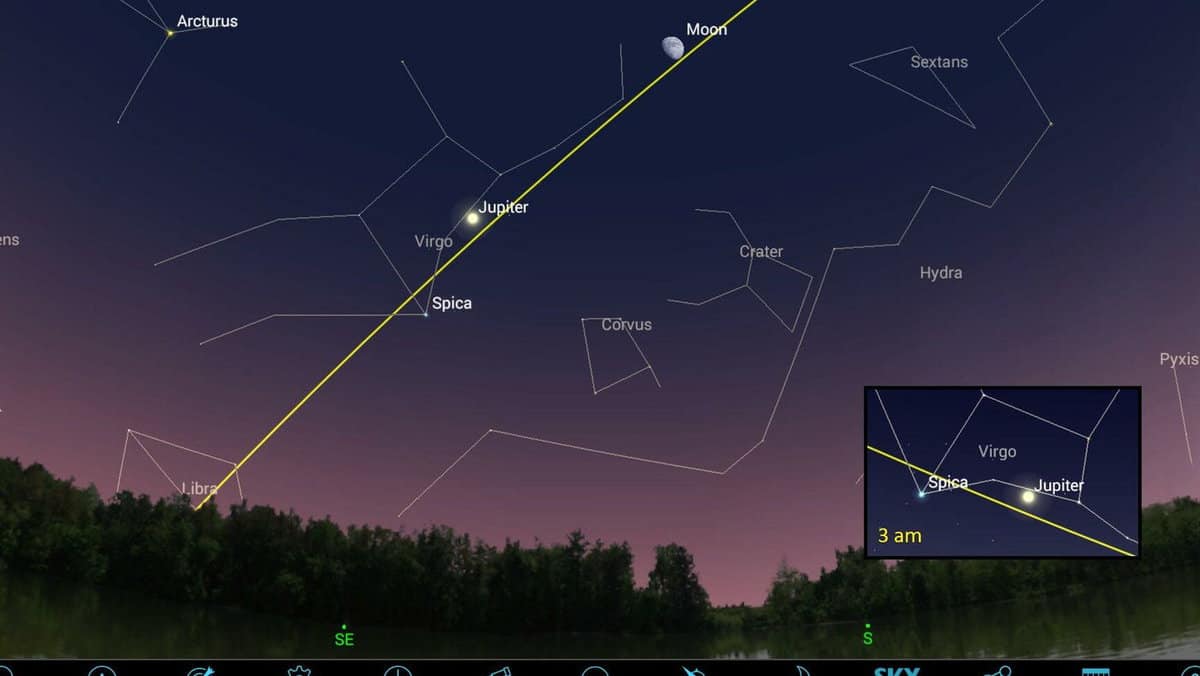Jupiter, the fifth planet from the Sun, is a prominent celestial body that stands out in the night sky. It appears as a brilliant white or yellowish-white star to the naked eye. One can easily differentiate Jupiter from regular stars by its remarkable luminosity. With a luminosity of -1.44 m, Jupiter shines much brighter than even Sirius. Moreover, Jupiter’s light is steady and constant, lacking the twinkle commonly associated with stars. In fact, the only star-like object in the sky that surpasses Jupiter’s brightness is the planet Venus. However, unlike Jupiter, Venus is not visible in the evening sky every year. Occasionally, Mars can exhibit a brightness comparable to that of Jupiter, although such instances are quite rare. In this article, we will explore the positioning and visibility of Jupiter in the sky throughout the year 2023, with special attention given to the opposition, which marks the optimal time for observing this celestial body.
Observing Jupiter in 2023
Jupiter’s Evening Visibility: January – March 2023
Starting from the beginning of 2023 until mid-March, Jupiter can be seen in the evening sky. After sunset, the planet can be observed in the southern direction in January, and in the southwest in February and March. Initially, in early January, Jupiter is visible for more than 5 hours, but as the days progress, its visibility gradually decreases. By February, the planet can be seen for an average of 3 hours, and by March, its visibility is limited to only about an hour.
In the evening sky of February and March 2023, Venus can be seen alongside Jupiter. These two planets seem to move closer to each other quite rapidly, and they will reach conjunction on March 2, 2023. During the conjunction, it becomes evident how much brighter Venus appears compared to Jupiter!
During February and March, Jupiter descends in the sky at the latitude of Moscow. The animation displays the planet’s position in the sky from February 1 to April 1, 2023, at the same time – 20:00. Take note of the rapidly rising Venus, which is the brightest. On March 2, 2023, the planets come together in a close conjunction. Figure: Stellarium
Learn more about upcoming conjunctions between Jupiter and Venus here.
Around mid-March, Jupiter’s evening visibility for the current year comes to an end. As Jupiter approaches closer to the Sun in the sky, it disappears into the evening dawn. On April 12, 2023, Jupiter aligns with the Sun in an upper conjunction. The planet then transitions to the morning sky.
Observing Jupiter in the Morning: June to July 2023
In the latter part of spring, the night quickly diminishes, causing Jupiter to become visible in the morning sky only in early June. By this time, the planet has moved sufficiently far away from the Sun in the sky. The visibility of Jupiter varies depending on the latitude of the observation location.
The most favorable conditions for observing Jupiter in June are found in the southern region of Russia. In this area, the planet emerges against a backdrop of a dark sky and remains visible in the eastern direction for approximately 2 hours before sunrise.
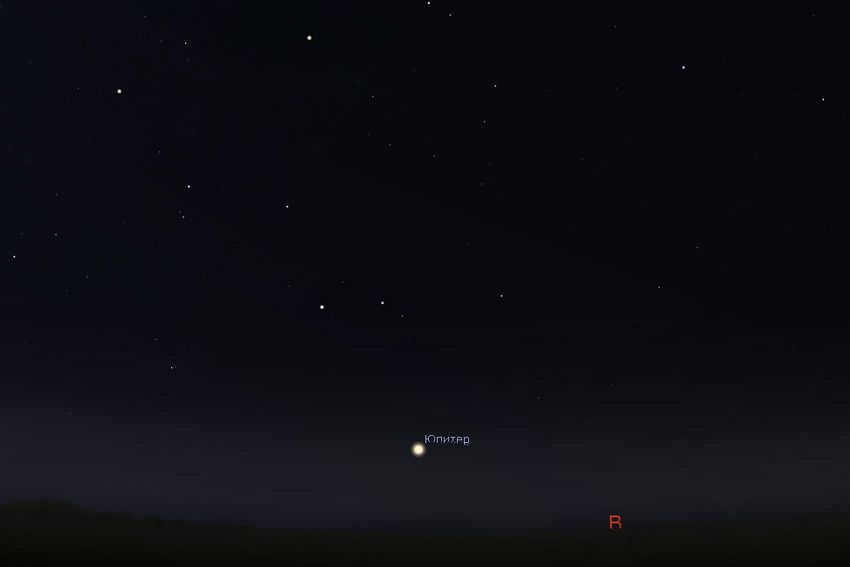
Jupiter will be visible in the sky during the month of June 2023. The image provided is specifically for the latitude of Krasnodar. Image source: Stellarium
In the central region of Russia, Jupiter can be seen rising in the east just before sunrise. It remains visible for approximately one hour before the sun comes up.

Jupiter appears in the night sky of Moscow in mid-June 2023. Image: Stellarium
In St. Petersburg’s latitude, it is quite challenging to spot Jupiter during the White Nights.
However, in July, the visibility of Jupiter improves, making it observable not only in the central region of Russia but also in Pskov, St. Petersburg, and even as far as Arkhangelsk by the end of the month!
During July, Jupiter rises late at night in Moscow’s latitude and can be seen for approximately 3-4 hours in the eastern part of the sky.
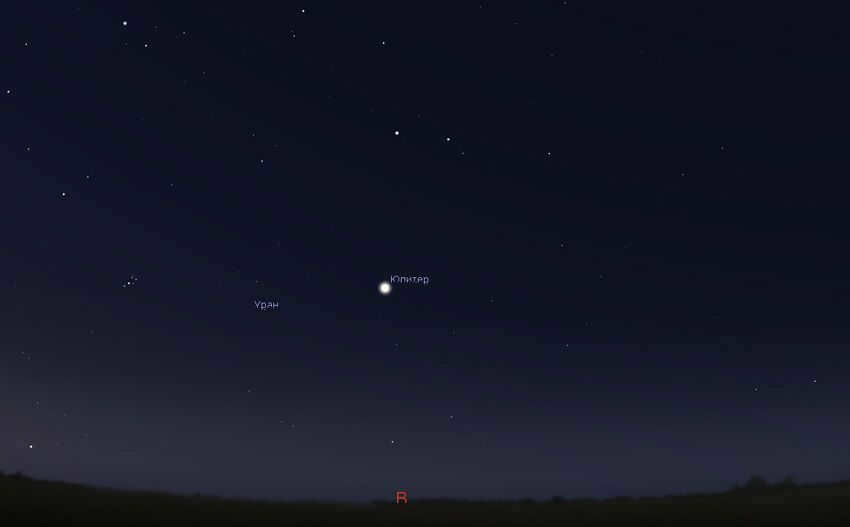
In the middle of July 2023, residents of Moscow will have the opportunity to see Jupiter in the morning sky. The planet will be located in the eastern direction. This information comes from Stellarium, a popular software for simulating the night sky.
By August 2023, Jupiter will be visible in the night sky
As we enter August, Jupiter will start rising shortly before midnight and will be visible until dawn in the eastern and southeastern directions. Throughout the month, the planet’s visibility will gradually increase from 5 to 7 hours.
If you have a telescope, the best time to observe Jupiter is late at night and early in the morning. During these times, the planet will be positioned above the southeastern horizon at an altitude of over 40 degrees.
Jupiter’s Appearance in the Autumn Sky
During the autumn season of 2023, the visibility of Jupiter improves significantly. By September, the planet becomes observable in the evening and remains visible until dawn. As we move into October 2023, Jupiter rises approximately one hour after sunset and can be observed throughout the entire night. Finally, in November, Jupiter reaches its opposition, marking the point when the planet achieves its maximum brightness and can be seen in the sky from dusk until dawn.
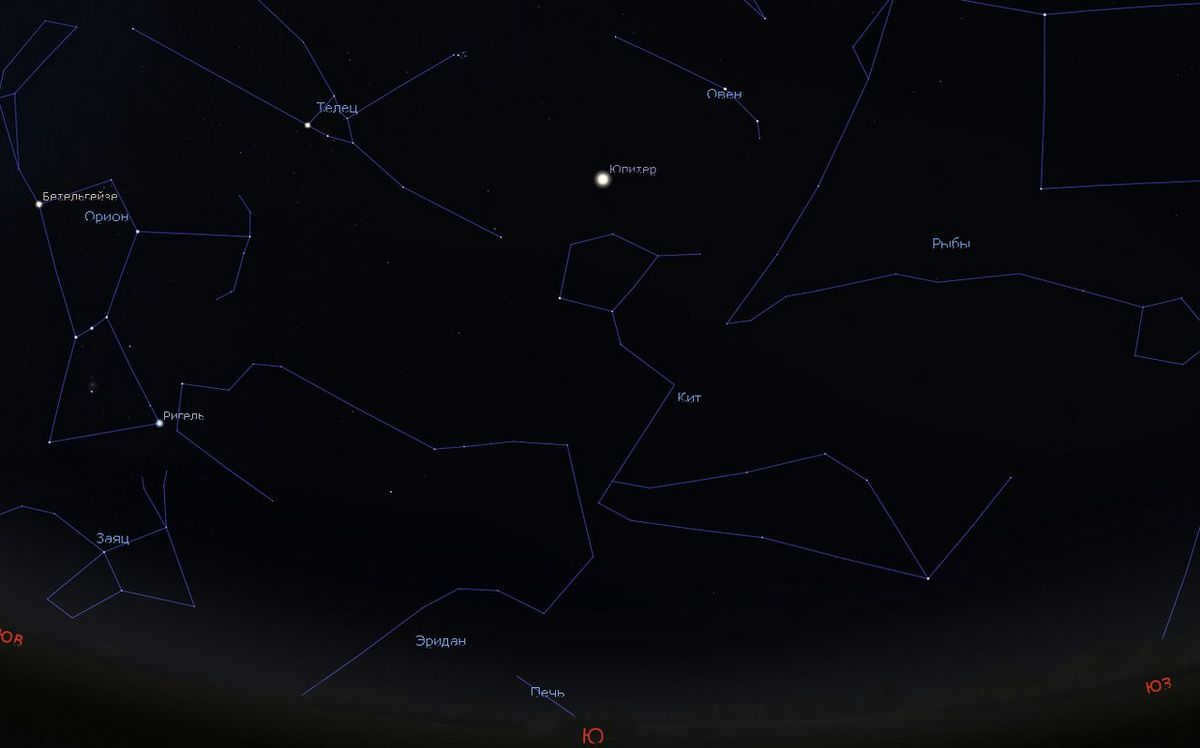
In October 2023, Jupiter and the constellations around it will be visible in the night sky. The planet will reach its highest point above the horizon around 2am. The image below shows the position of Jupiter and its surrounding constellations during that time.
Important Dates for Jupiter in 2023
Key Dates for Jupiter in 2023
| January 20, 2023 | Jupiter reaches its closest point to the Sun (perihelion) | -2.24 | 37.2 | Pisces | Evening |
| April 12, 2023 | Jupiter aligns with the Sun | -2.05 | 33.1 | Pisces | No information |
| September 5, 2023 | Jupiter experiences a period of stagnation and changes its motion | -2.62 | 44.6 | Aries | Night |
| November 3, 2023 | Jupiter is in opposition | -2.91 | 49.5 | Aries | All night |
| July 8, 2023 | Jupiter forms a square with the Sun in the western sky | -2.40 | 40.6 | Aries | Morning |
| November 2, 2023 | Jupiter is at its closest distance to Earth | -2.91 | 49.5 | Aries | All night |
What is the optimal period to observe Jupiter in 2023?
During the initial part of the year, the optimal period to observe the planet is from January to February, when it can be exclusively seen in the evening sky. In the latter half of 2023, the best time commences a few weeks before the opposition, which takes place on November 3, and continues until the year’s end.
Jupiter’s opposition in 2023
Jupiter is classified as one of the outer planets in our solar system, meaning that its orbit is located further away from the Sun compared to Earth’s orbit. The ideal time to observe the outer planets is during a specific period near their opposition. In the case of Jupiter, this period can span from 2 to 3 months, depending on the exact date of the opposition.
An opposition occurs when the Sun, Earth, and Jupiter align in a straight line. During this alignment, the Earth is positioned precisely between the Sun and Jupiter, with one side facing the Sun and the other side facing the massive planet. This alignment repeats approximately every 398.9 days, causing the oppositions to take place 33.5 days later each year.
So, why are the times near oppositions the most favorable for observing Jupiter?
Initially, when Jupiter is in close proximity to its opposition, it ascends into view during the evening and descends out of sight during the morning (taking into account the refraction effect, Jupiter becomes visible slightly earlier and remains observable slightly longer). Consequently, the planet remains visible throughout the entire night. This proves to be highly advantageous as it provides the opportunity to select the most optimal time for conducting observations.

Jupiter is the most fascinating planet to observe through a telescope. Unlike Mars, its apparent size consistently changes throughout the year, allowing for detailed study of its disk for nearly the entire visibility period. The photograph shown here was captured in the autumn of 2022 when Jupiter was at its closest distance to Earth since 1963. Photo credit: Efrain Morales
Additionally, Jupiter reaches its peak brightness and has the largest angular size in the sky during this time due to its proximity to Earth. This aspect is particularly noteworthy when observing the planet using a telescope.
Ephemerides of Jupiter 2023
2023 Jupiter Ephemerides Table
The table of ephemerides displays the celestial positions of Jupiter throughout the year 2023, in intervals of 15 days. The columns present the date, coordinates of Venus (right ascension α and declination δ), the planet’s distance from Earth in astronomical units, Jupiter’s luminosity and phase, as well as its apparent diameter (in angular seconds). The final column for each date provides the angle between Jupiter and the Sun in the sky.
| January 1, 2023 | 0 h 05 min 12.8 sec | -00° 50′ 19,0″ | 5.01 | -2.35 | 99.03% | 39.4 | +80° 59′ 43,5″ |
| January 16, 2023 | 0 h 12 min 46.6 sec | +00° 02′ 36,2″ | 5.24 | -2.26 | 99.15% | 37.6 | +67° 48′ 18,2″ |
| January 31, 2023 | 0 h 22 min 10.3 sec | +01° 06′ 42,5″ | 5.45 | -2.19 | 99.33% | 36.2 | +55° 07′ 44,6″ |
| February 15, 2023 | 0 h 33 min 00.6 sec | +02° 19′ 11,6″ | 5.63 | -2.13 | 99.54% | 35.0 | +42° 54′ 23,2″ |
| March 2, 2023 | 0 h 44 min 57.2 sec | +03° 37′ 29,7″ | 5.77 | -2.09 | 99.73% | 34.1 | +31° 03′ 23,0″ |
| March 17, 2023 | 0 h 57 min 40.9 sec | +04° 59′ 06,4″ | 5.88 | -2.07 | 99.89% | 33.5 | +19° 31′ 31,6″ |
| April 1, 2023 | 1 h 10 min 55.5 sec | +06° 21′ 51,6″ | 5.94 | -2.05 | 99.98% | 33.2 | +8° 15′ 31,7″ |
| April 16, 2023 | 1 h 24 min 25.4 sec | +07° 43′ 39,3″ | 5.95 | -2.05 | 100.00% | 33.1 | +3° 07′ 30,4″ |
| May 1, 2023 | 1 h 37 min 56.4 sec | +09° 02′ 42,8″ | 5.93 | -2.05 | 99.94% | 33.3 | +14° 00′ 55,0″ |
| May 16, 2023 | 1 h 51 min 13.6 sec | +10° 17′ 20,4″ | 5.85 | -2.07 | 99.81% | 33.7 | +25° 00′ 28,1″ |
| May 31, 2023 | 2 h 04 min 01.8 sec | +11° 26′ 05,1″ | 5.74 | -2.1 | 99.64% | 34.4 | +36° 04′ 52,9″ |
| June 15, 2023 | 2 h 16 min 04.0 sec | +12° 27′ 35,9″ | 5.59 | -2.14 | 99.43% | 35.3 | +47° 18′ 46,1″ |
| June 30, 2023 | 2 h 27 min 01.2 sec | +13° 20′ 41,0″ | 5.41 | -2.19 | 99.22% | 36.5 | +58° 48′ 51,8″ |
| July 15, 2023 | 2 h 36 min 32.2 sec | +14° 04′ 15,5″ | 5.20 | -2.26 | 99.06% | 37.9 | +70° 41′ 22,6″ |
| July 30, 2023 | 2 h 44 min 13.0 sec | +14° 37′ 16,7″ | 4.98 | -2.35 | 98.96% | 39.6 | +83° 04′ 14,7″ |
| August 14, 2023 | 2 h 49 min 39.0 sec | +14° 58′ 51,8″ | 4.75 | -2.45 | 98.96% | 41.5 | +96° 04′ 23,7″ |
| August 29, 2023 | 2 h 52 min 26.6 sec | +15° 08′ 09,3″ | 4.53 | -2.56 | 99.08% | 43.5 | +109° 49′ 25,9″ |
| September 13, 2023 | 2 h 52 min 20.0 sec | +15° 04′ 44,0″ | 4.33 | -2.68 | 99.30% | 45.6 | +124° 23′ 56,2″ |
| September 28, 2023 | 2 h 49 min 16.5 sec | +14° 48′ 44,3″ | 4.16 | -2.79 | 99.57% | 47.4 | +139° 49′ 47,3″ |
| October 13, 2023 | 2 h 43 min 38.4 sec | +14° 21′ 44,8″ | 4.04 | -2.87 | 99.83% | 48.8 | +156° 01′ 25,3″ |
| October 28, 2023 | 2 h 36 min 14.4 sec | +13° 47′ 08,7″ | 3.99 | -2.91 | 99.98% | 49.5 | +172° 42′ 54,9″ |
| November 12, 2023 | 2 h 28 min 18.4 sec | +13° 10′ 24,6″ | 4.00 | -2.9 | 99.97% | 49.3 | +170° 00′ 00,2″ |
| November 27, 2023 | 2 h 21 min 11.2 sec | +12° 38′ 03,4″ | 4.08 | -2.84 | 99.80% | 48.3 | +153° 07′ 05,0″ |
| December 12, 2023 | 2 h 16 min 02.4 sec | +12° 16′ 00,6″ | 4.22 | -2.75 | 99.54% | 46.6 | +136° 36′ 50,4″ |
| December 27, 2023 | 2 h 13 min 36.3 sec | +12° 08′ 12,2″ | 4.41 | -2.63 | 99.28% | 44.7 | +120° 45′ 03,3″ |
Jupiter and Moon conjunctions in 2023
The conjunction of the Moon and Jupiter is a highly anticipated celestial event that occurs throughout the year. Every month, our satellite comes close to the planet in the sky, creating a stunning visual display. The most captivating moments are witnessed during the evening hours, when the Moon takes on the shape of a slender crescent. Two notable conjunctions took place in January 26 and March 23, 2023, showcasing the ethereal beauty of this celestial phenomenon. However, the most remarkable conjunction occurred on February 22-23, when the planet Venus also joined Jupiter and the Moon in the night sky, amplifying the enchantment of the event.
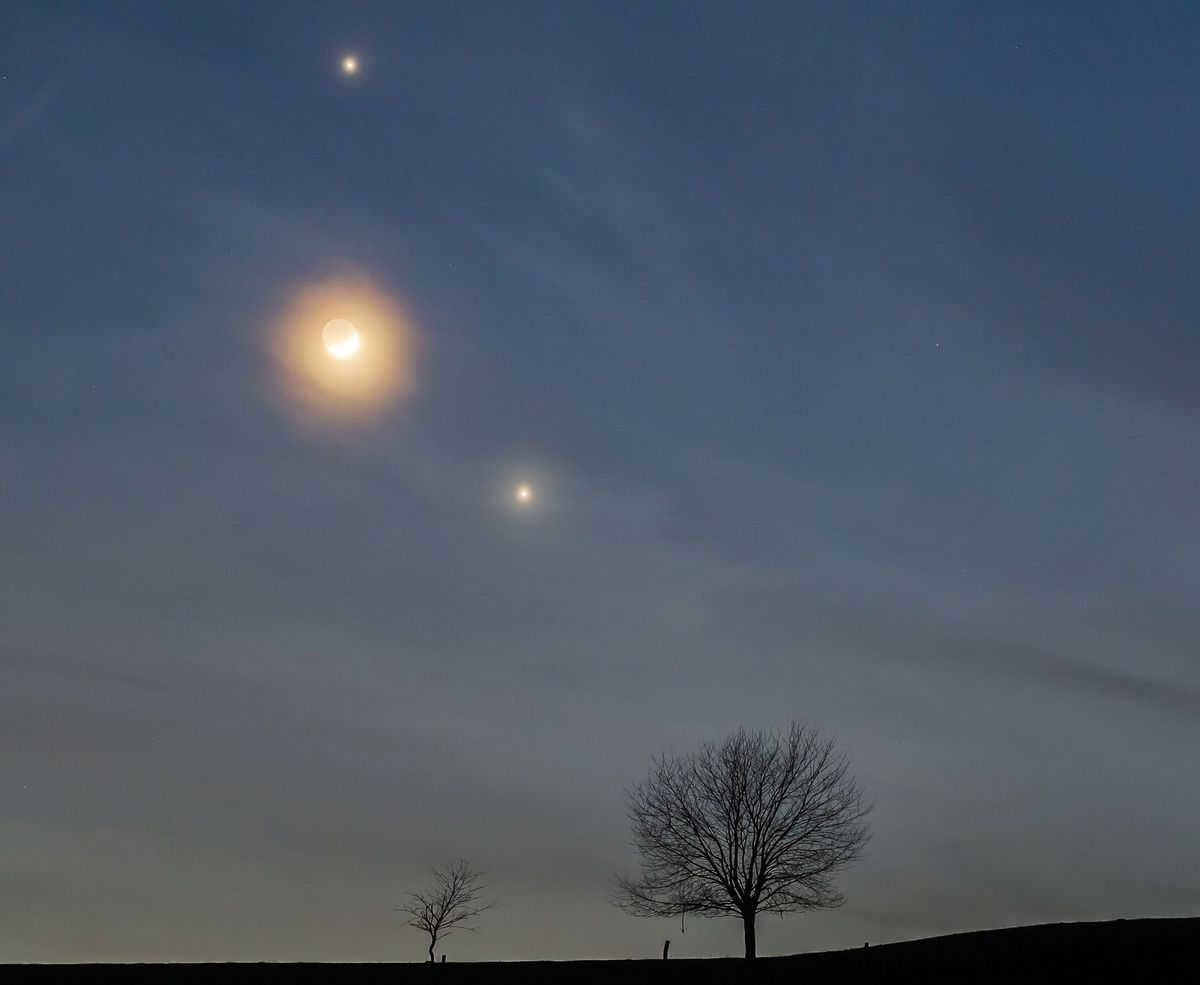
The convergence of Jupiter, the Moon, and Venus in the sky on February 22, 2023 was captured in a photograph by Rafee.
During the summer of 2023, there will be sightings of Moon-Jupiter conjunctions in the morning sky. As autumn arrives, the Moon and Jupiter will be visible throughout the dark hours of the day, appearing in the evening in the east, at night in the south, and in the morning in the west.
Conjunctions of Jupiter and the Moon in 2023
The table contains information about various conjunction events between Jupiter and the Moon in 2023. It includes the type of event, the date of occurrence, the stellar magnitude of Jupiter and the Moon during the event, the angular distance between the two celestial bodies in the sky, and the time of observation. The final column specifies the direction from which the event can be observed. If the column contains a “-“, it means that the event is not observable. If it contains a “*”, it means that the event can be observed from different parts of the sky depending on the time of day.
| Conjunction | January 26 | -2.21 | -8.96 | +02° 26′ 26.4″ | In the evening | West |
| Connection | February 23 | -2.11 | -7.41 | +01° 45′ 14.4″ | Evening of February 22 and 23 | West |
| Connection | March 23 | -2.06 | -4.69 | +01° 08′ 21.8″ | Evening of March 22 and 23 | West |
| Connection | April 19 | -2.05 | -1.42 | +01° 16′ 41.8″ | In the daytime sky | — |
| Overlap | May 17 | -2.07 | — | In the daytime sky at the new moon | — | |
| conjunction | June 14 | -2.14 | -8.29 | +00° 45′ 27.0″ | In the morning | East |
| Conjunction | July 11 | -2.25 | -9.37 | +01° 07′ 14.9″ | Morning of July 12 | East |
| Connection | August 8 | -2.41 | -10.26 | +02° 10′ 01.5″ | In the morning | Southeast |
| Connection | September 4 | -2.62 | -11.11 | +02° 07′ 01.7″ | Night of September 4-5 | East, South |
| Connection | October 2 | -2.81 | -11.90 | +02° 40′ 53.8″ | All night | * |
| Connection | October 29 | -2.91 | -12.76 | +02° 10′ 15.6″ | All night | * |
| Connection | November 25 | -2.85 | -12.21 | +01° 35′ 58.8″ | Evening, night | * |
| Connection | December 22 | -2.67 | -11.53 | +01° 27′ 41.8″ | Evening, night | * |
Conjunctions of Jupiter and planets
Jupiter and planets conjunctions in 2023
| March 2 | Jupiter and Venus | -2.09 and -3.94 | +00° 29′ 16.1″ | In the evening | West |
| March 28 | Jupiter and Mercury | -2.05 and -1.42 | +01° 16′ 41.8″ | In the evening | West |
| May 17 | Jupiter and Mercury | -2.07 and 1.55 | +06° 11′ 38.0″ | — | — |
| September 6 | Jupiter and Uranus | -2.63 and 5.74 | +07° 32′ 14.9″ | In the evening | East |
Columns provide information on the following: the date when the conjunction occurs, the planets that are involved in the event, the luminosity of these planets, the angular distance between the luminaries, and the time of day when the luminaries and their direction can be observed.
Jupiter’s celestial motion in 2023
Now, let’s examine Jupiter’s movement in more detail over the course of the year.
Jupiter’s Journey from January to May 2023
In January 2023, Jupiter can be found in the Pisces constellation, positioned 15 degrees south of the star Algenib in Pegasus Square. As the year progresses, Jupiter will continue its journey across the sky, moving in the same direction as the Sun, from west to east, along the ecliptic.
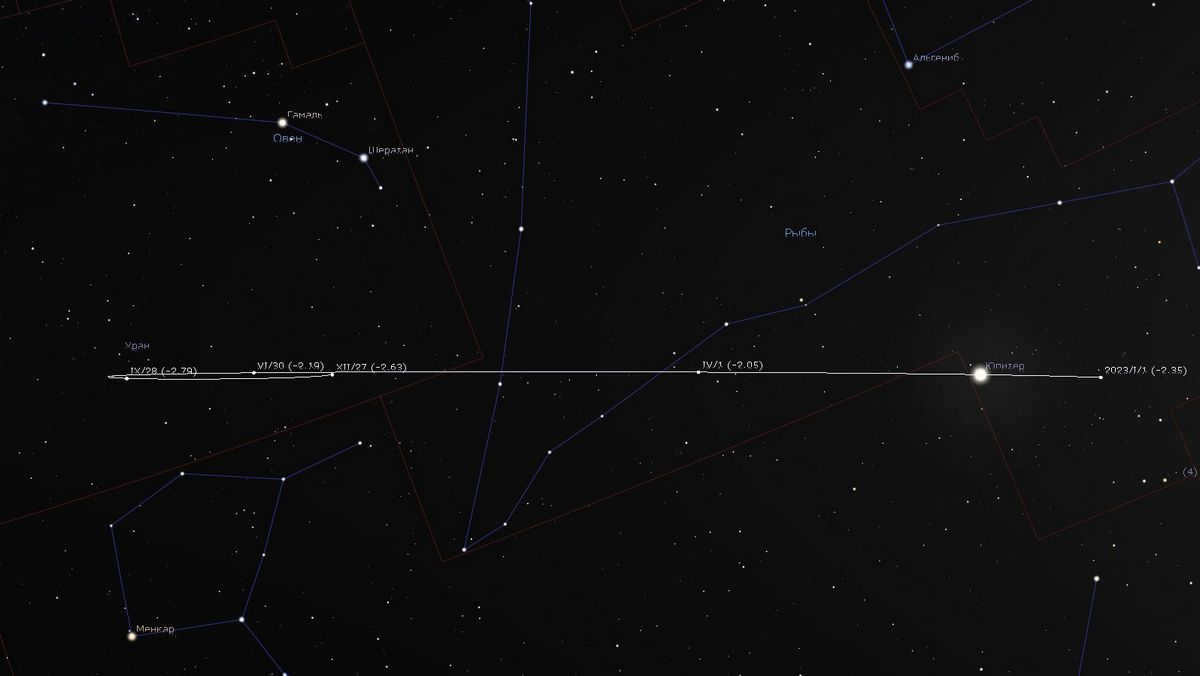
In 2023, Jupiter follows a specific path as it moves across the night sky, passing through the constellations of Pisces, Cetus, and Aries. As it reaches Aries, it forms a loop and moves in a distinct pattern from September to the end of the year. This celestial journey can be observed south of the brightest stars in the Aries constellation, Gamal and Sheratan. The information presented is based on the data provided by Stellarium.
On January 12, Jupiter crosses the celestial equator and enters the northern hemisphere of the celestial sphere. During this time, the planet can be seen in the western direction shortly after evening twilight.
By February 6, Jupiter becomes visible in the constellation of China, where it remains until February 19.
On March 2nd, the planet Jupiter joins Venus in a close alignment. These two bright planets are only 30 angular minutes apart, which is about the same as the visible diameter of the Moon in the sky!
Towards the end of March, the evening visibility of Jupiter in its 2022-2023 appearance comes to an end. For the next three months, the planet will not be visible in the sky.
During this time, Jupiter continues its journey closer to the Sun in the sky. On April 14th, there will be an upper conjunction, and the planet will appear to be behind the Sun when observed from Earth.
Afterwards, Jupiter will transition into the morning sky.
The first appearance of Jupiter in the morning sky occurs in late May for residents of southern Russia and in mid-June for residents of the central part of the country. During this time, the planet can be seen for just over an hour against the backdrop of the dawn.
Continuing its eastward journey among the stars, on May 19th, Jupiter moves from the constellation of Pisces into Aries. Jupiter will remain in this zodiacal constellation until the end of 2023.
In the latter half of the year, Jupiter’s visibility improves month by month. By July, Jupiter becomes visible in the morning sky in Russia. In mid-August, the planet rises around midnight and can be observed throughout the night.
On September 5, 2023, Jupiter experiences a phenomenon known as a standstill. During this time, the planet temporarily halts its motion against the backdrop of the stars before entering into a retrograde motion, moving from east to west and forming a loop with a diameter of approximately 10° (refer to the figure above).
November 3 marks the Jupiter opposition, which is the highlight of this period for observing the planet. At this time, Jupiter reaches a luminosity of -2.91 m and has an angular diameter of 49.5″. The period between late October and late December offers the best opportunity to observe Jupiter in 2023. The planet rises in the eastern sky shortly after sunset, can be observed in the southeast and south during the evening, and sets in the western horizon in the early morning.
Currently, Jupiter reigns supreme in the celestial realm, standing apart from any other celestial body (Venus, only visible in the eastern morning skies towards the end of 2023).
To summarize, we extend our wishes for fruitful stargazing and unobstructed skies!
Jupiter – the largest planet in our solar system, named after the esteemed Roman deity, embodies its divine status in the night sky. Its movement is unhurried against the backdrop of stars, completing a full orbit around the Zodiac in 12 years! Regardless of the time you observe Jupiter, its brilliance never fails to captivate. It is impossible to mistake Jupiter for an ordinary star in the night sky.
Jupiter’s cycles of visibility
The visibility of Jupiter commences when it first emerges in the rays of the morning dawn following the upper conjunction (when the planet passes behind the Sun in the sky). While Jupiter usually moves in the same direction as the Sun, from west to east, it moves at a slower pace. Lagging behind our daytime star, the planet gradually transitions from the morning sky to the night sky over the span of several months.
In reality, the lag is observable. If we were to depart from Earth and observe the solar system from an external vantage point, we would see that it is actually the Earth, in its relatively small orbit around the Sun, catching up with the slow-moving Jupiter.
About half a year after its initial appearance, Jupiter engages in a confrontation with the Sun. This is the optimal moment is the best time to witness the planet with the naked eye and through a telescope. During this period, Jupiter’s forward movement has already shifted to a sideways motion. backward or retrograde. (The opposition occurs in the middle of the planet’s retrograde path. At this point, the planet moves in the opposite direction compared to the stars. from left to right..) Within four months, the planet forms a small loop in the celestial sphere (approximately 10° in magnitude), and then resumes its leisurely journey in a direct trajectory. The conclusion of the sideways motion signifies Jupiter’s transition Jupiter’s transition to the evening sky. The planet can only be observed during the evenings in the southern and western directions, disappearing below the horizon before midnight. After a few additional months, Jupiter fades from sight, blending into the background of the evening dawn.
Jupiter’s Movement in Relation to the Constellations
Jupiter completes one orbit around the Sun in approximately 12 years, resulting in an average duration of 1 year to traverse a zodiacal constellation. Presented below are visual representations that demonstrate the path of Jupiter in relation to the constellations throughout the year 2022.
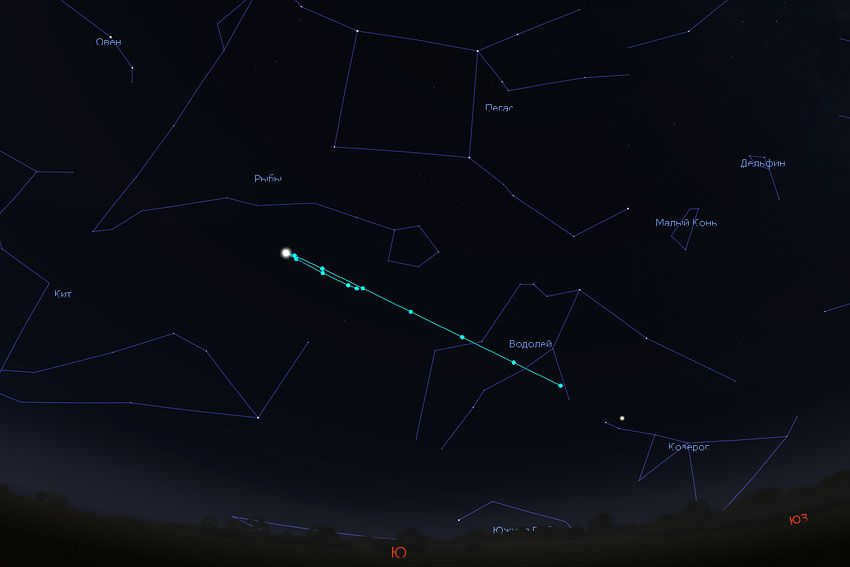

The path of Jupiter as it moves through the zodiacal constellations during the period from January 1 to December 31, 2022 is depicted in the image above. The motion of Jupiter begins on the right side, within the constellation Aquarius. Throughout most of the year, Jupiter’s movement is in the eastward direction, against the backdrop of the stars. This motion is known as a straight line. The markers along the line indicate the planet’s position every 30 days. It is notable that in the spring, Jupiter transitions from the constellation Aquarius to the constellation Pisces. Furthermore, towards the end of July 2022, Jupiter comes to a halt in the sky and changes direction, completing its motion by the end of the year. The information and image are sourced from Stellarium.
Here is a demonstration of Jupiter’s movement over the course of the year, accompanied by markers. Simply click on the image to view it in a larger size.
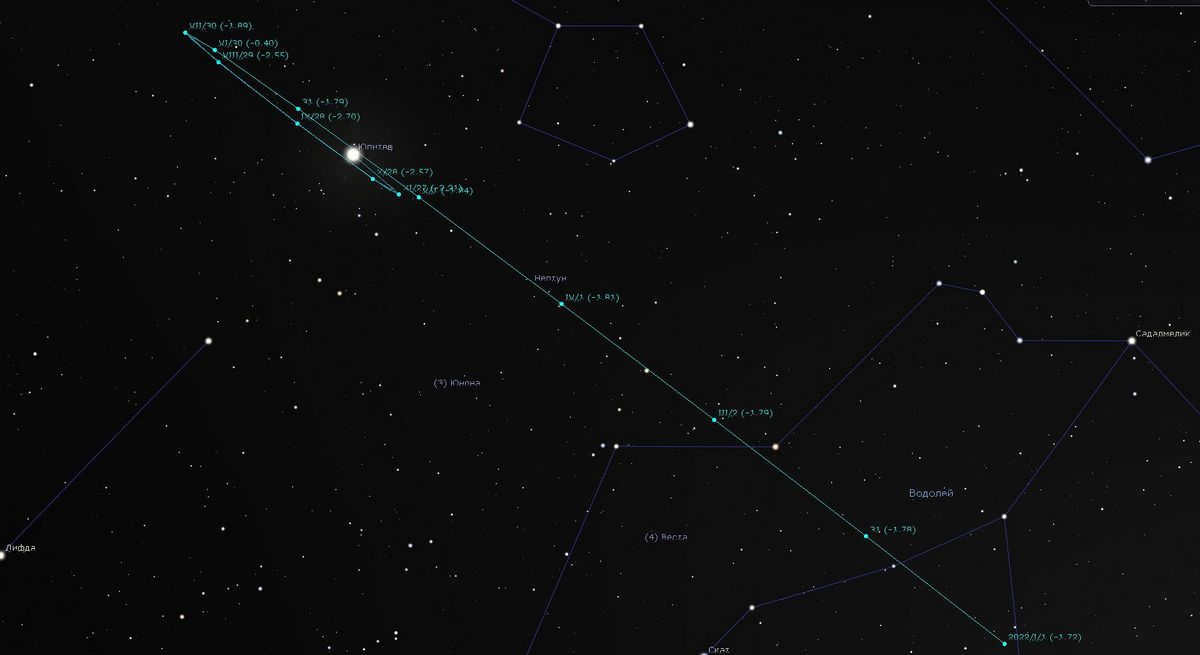
An elaborate trajectory of Jupiter as it moves across the sky in 2022 is depicted in this illustration. The markers indicate the specific dates when the planet occupies each position, accompanied by its stellar magnitude (which depends on the visibility conditions) shown in parentheses. The information for this visualization is sourced from Stellarium.
Jupiter is the most luminous celestial body in the night sky, second only to Venus. Its luminosity ranges from -1.6 m to -2.9 m. Consequently, Jupiter always appears brighter in the sky than Sirius, which is the most brilliant of all the stars. Visually, it resembles a vast, radiant white or yellowish-white star. Throughout twilight and both morning and evening twilight, the planet is highly conspicuous.
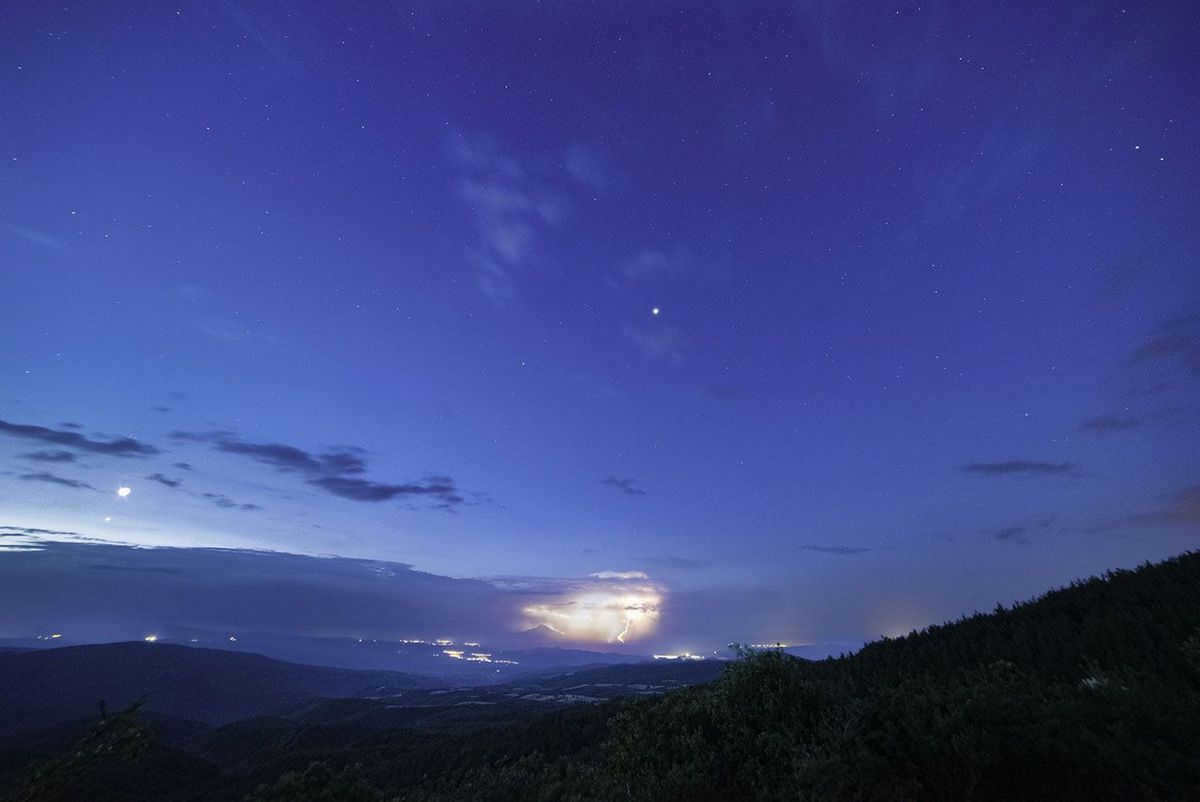
In the sky during the month of June 2022, there is a prominent presence of the bright planet Jupiter. During the early hours of the morning, this celestial body can be observed with great clarity. By comparing its luminosity to that of the slender crescent of the Moon and Venus (both celestial bodies are situated to the left in the background of the morning sky), one can truly appreciate the brilliance of Jupiter. The photograph, captured by conemmil/asterisk.apod.com, beautifully showcases this captivating sight.
What sets Jupiter apart is its serene and steady radiance. Unlike stars that twinkle and fluctuate, this planet remains constant and unwavering in its luminosity. Even when it lies low above the horizon, Jupiter resembles more of a distant spotlight than a conventional star.
The Appearance of Jupiter to the Naked Eye
Typically, Jupiter appears as a white or yellowish-white celestial body to an observer. This is its inherent color. However, when the planet is positioned low on the horizon, it may take on a yellowish hue or even appear entirely yellow. This phenomenon is caused by the significant scattering of light in Earth’s atmosphere near the horizon. Consequently, the Sun can also exhibit a deep yellow or even red color during sunrise or sunset, while the Moon may appear orange for the same reason.
Jupiter: The Shining Planet
When observing Jupiter against a dark sky, it gives the impression of emitting short rays in all directions, resembling a radiant star. This unique feature led the ancient Greeks to refer to the planet as Phaeton, meaning “radiant.” However, these rays are not exclusive to Jupiter but are also visible in other bright stars.
The radiant appearance of the planet is a result of the imperfections in the human eye’s lens. By observing Jupiter through a small aperture, such as a needle hole, the rays vanish, and it appears as a luminous point of light.
Jupiter’s present position in the sky
Discovering the current location of Jupiter in the sky can be accomplished through various means.
- One method is to install an astronomy application, such as Stellarium, Star Walk 2, or any other similar software, on your computer or mobile device. These apps or programs will furnish you with all the necessary information.
- Another option is to visit the website www.astronet.ru, overseen by Alexander Kozlovsky. This site regularly publishes weekly and monthly reviews of astronomical phenomena, providing the positions of all the planets. Additionally, a comprehensive astronomical calendar is released annually on the site.
- For specific details concerning the visibility of Jupiter, as well as other planets, consult the relevant monthly articles available on this website.
The optimal time to observe Jupiter, along with other outer planets, is during an opposition. But what exactly is an opposition? It occurs when the Sun, Earth, and an outer planet align in such a way that the planet (whether it be Mars, Jupiter, Saturn, Uranus, or Neptune) is positioned directly opposite the Sun in our sky.
An opposition holds particular significance for telescope users and astrophotographers who are keen on observing these planets.
- During an opposition, Earth is closest to the planet compared to any other time of year. Consequently, Jupiter appears at its brightest in the night sky and exhibits the largest angular size when observed through a telescope. This allows observers to discern more intricate details on the planet’s surface.
- During the time of opposition, the planet can be seen in the sky all night long. It appears on the horizon at sunset and disappears behind the horizon at dawn. This provides the opportunity to choose a convenient time for observation.
- The side of the planet that is fully lit up by the Sun is facing towards the Earth. As a result, the planet appears to be 100% illuminated. (This is more significant for Mars compared to Jupiter!)
Jupiter becomes exceptionally bright during opposition. It rises directly opposite the Sun, shortly after it sets, and can be easily seen in the sky during twilight. This is a special event for those who enjoy observing planets without the aid of telescopes.
Here is a table displaying the oppositions of Jupiter from 2022 to 2035. These oppositions happen approximately every 13 months. It takes the Earth 12 months to complete one orbit around the Sun and return to its starting point, and a little over a month to catch up with Jupiter, which is also continuously moving in its own orbit.
Jupiter’s oppositions from 2022 to 2035.
The table displays the opposition date, time, Jupiter’s brightness in stellar magnitudes, the constellation where the planet is positioned during opposition, and the observing conditions (refer to the accompanying table for explanations). The final column indicates the angle between Jupiter and the Sun at the time of opposition.
An explanation of the table of oppositions.
| Conditions | Explanation |
| unfavorable | For an observer located in Russia, the planet is situated at a low altitude in the sky, making it difficult to observe effectively with a telescope. When attempting to view with the naked eye, the planet may be obstructed by various objects such as buildings, mountains, and trees. In urban areas, it can be challenging to see the planet, therefore a location with an unobstructed view is necessary. |
| moderate | The planet is easily visible in the sky without any optical aids. When observed through a telescope, some details may appear blurry, but under calm and clear atmospheric conditions, interesting features can be observed. |
| favorable | Ideal conditions for observing the planet, both with the naked eye and through a telescope. The atmosphere mostly allows for detailed examination of the planet using high magnifications. |
| excellent | The best time to observe the planet using a telescope. The planet reaches a very high position above the horizon, minimizing distortions caused by the Earth’s atmosphere. |
Jupiter in the night sky
As the night falls, Jupiter gradually loses its brightness. Additionally, its apparent size when seen through a telescope decreases. In outer space, the planet is moving farther away from Earth.
However, observing Jupiter in the night sky remains convenient and captivating. It is convenient for obvious reasons, as many astronomy enthusiasts cannot afford sleepless nights or early mornings. There are two aspects that make it interesting. Firstly, the visually stunning images of a radiant planet amidst the twilight. Secondly, the conjunctions of Jupiter with other prominent planets. (Conjunctions usually take place in the evening or morning sky, but observing them in the evening is much more convenient.)
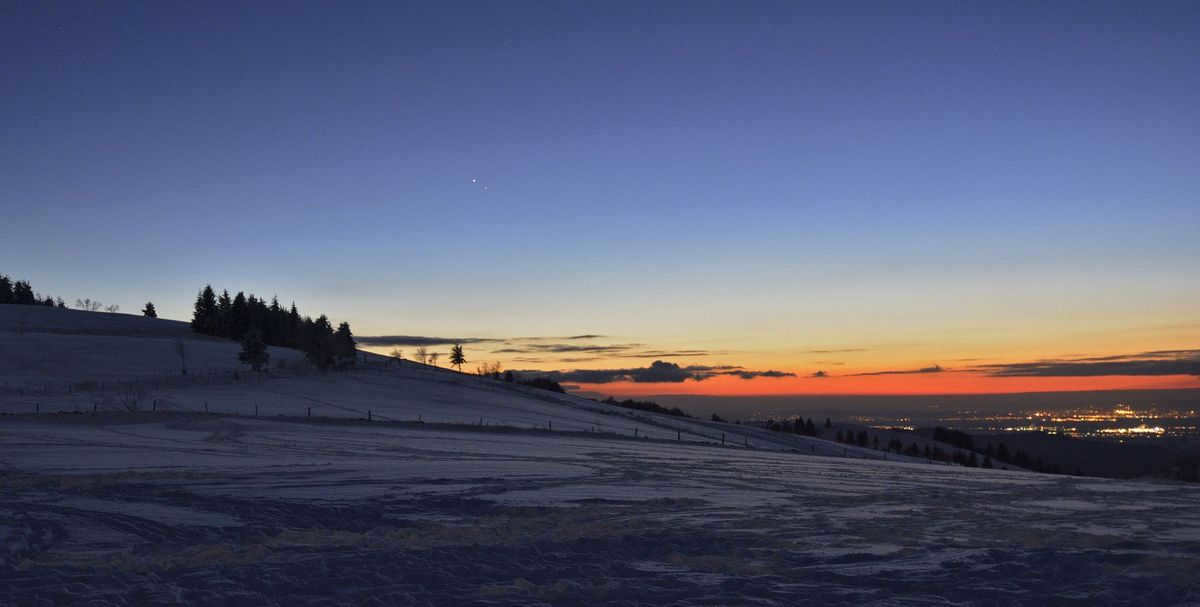
In December 2020, there was a significant event known as the grand conjunction of Jupiter and Saturn. The photo captured by Matthias Huber showcases this celestial phenomenon.
Looking ahead, here is a comprehensive table that outlines Jupiter’s conjunctions with other planets until 2035. The table specifically includes conjunctions that can potentially be observed in the night or twilight sky, with an angular distance of the planets from the Sun greater than 11°. However, it’s important to note that not all of the phenomena listed in the table can be seen with the naked eye. For conjunctions involving Uranus and Neptune, a telescope will be necessary. The table encompasses evening, morning, and night conjunctions.
Jupiter’s Alignments from 2022 to 2035
This table presents the dates and times when Jupiter will be in conjunction with other planets between 2022 and 2035. It also includes the magnitude of Jupiter during these conjunctions, the luminosity of the other planet, and the angular distance between the two planets. The final column displays the angular distance of the planets from the Sun at the moment of conjunction. If this angle is less than 30 degrees, the conjunction can only be observed during morning or evening twilight.
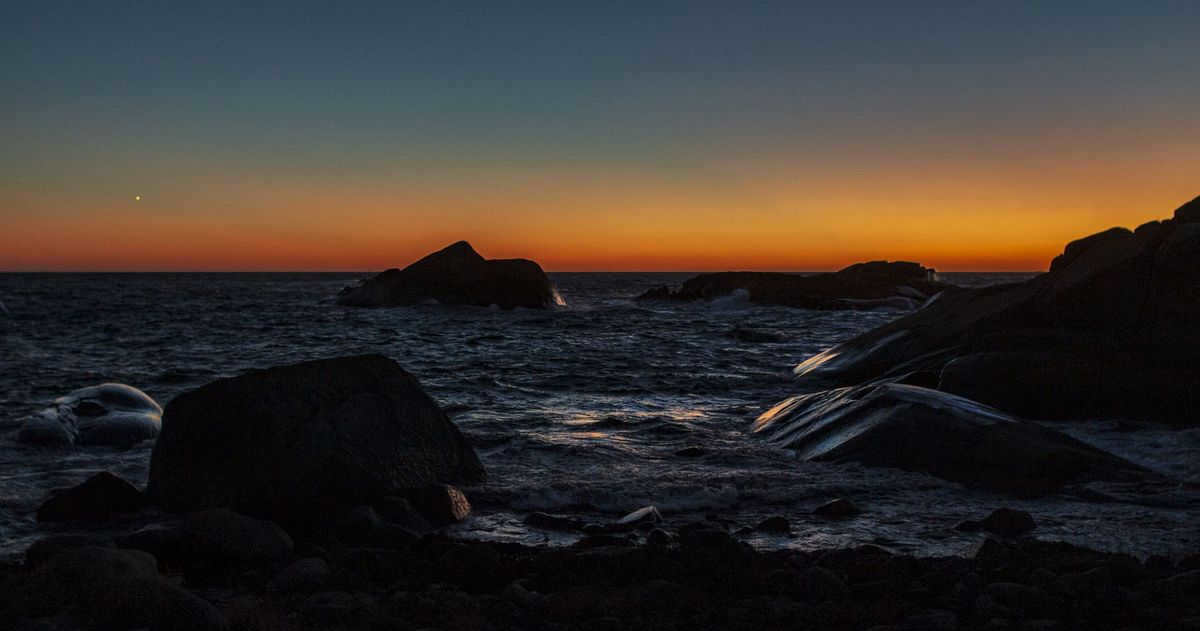
Jupiter can be seen in the evening twilight, marking one of its final appearances in 2021. In a few weeks, the planet will align with the Sun and transition to the morning sky. This captivating photo, captured by Mark Langdon, showcases the beauty of Jupiter.
With over 30 years of experience overseeing the physics education and continuing education department at the Deutsches Museum in Munich, Professor Emeritus Jürgen Teichmann has established himself as a renowned physicist. He is also responsible for curating the world’s largest astronomy exhibit.
During clear summer evenings, stargazing becomes a captivating activity, especially in rural areas where light pollution is minimal. Previously, we have provided guidance on locating constellations and observing the Moon. Today, we will discuss how to spot the planets of our solar system with the naked eye.


There are five celestial bodies in the night sky that are visible to the naked eye – and they possess unique characteristics that set them apart from the countless others. The ancient Babylonians, Egyptians, and Greeks were already aware of this fact. They referred to these celestial bodies as planets, a Greek word meaning “wanderer” or “traveler.”
Planets are not stationary in the sky and their positions change from night to night. Over the course of weeks or months, these wandering celestial bodies traverse multiple constellations. Unlike stars, planets do not twinkle, but they do emit a brilliant glow at certain times. The five planets in question are Mercury, Venus, Mars, Jupiter, and Saturn – all of which are well-known to us.
The planets do not emit light themselves, like the Sun, but rather only reflect its light. It’s comparable to shining a lamp on a dark piece of paper. Planets orbit the Sun in both close and distant orbits. For instance, Mercury has a very close orbit, while Uranus and Neptune have very distant orbits. Consequently, Uranus and Neptune can only be observed with the aid of binoculars or a telescope.
Our Earth, naturally, is also a planet. It completes a full revolution around the Sun in one year. The ancient Greeks were unaware of this fact, as the Earth couldn’t be observed from the outside. They simply noticed that all the stars and the Sun appeared to move around the Earth on a daily basis.
The ancient Greeks observed five celestial bodies in the heavens. It was not until Copernicus’s era that humanity began to comprehend the true nature of our world and recognize Earth as one of the planets. Subsequently, astronomers utilizing telescopic technology detected two additional planets, thus expanding our solar system’s planetary count to eight.

There are a total of 8 planets in our solar system, along with numerous small objects located between the orbits of Mars and Jupiter. Take a look at Pluto, which can be seen orbiting at the farthest distance from the Sun. Interestingly, Pluto was previously classified as a planet
There exists a verse of this nature: “We are all aware: Julie’s mother took her pills in the morning.” There are nine words. Each word commences with the initial letter of a planet’s name: Mercury, Venus, Earth, Mars, Jupiter, Saturn, Uranus, Neptune, Pluto. Presently, Pluto is classified as a dwarf planet.
Mercury is exceptionally challenging to locate in the celestial sphere. It is situated in close proximity to the Sun, thus making it visible solely shortly after sunset and before sunrise. However, if your view is obstructed by mountains, trees, or buildings, it shall pose a challenge. For the Romans and Greeks, Mercury (known as Hermes to the Greeks) was the messenger of the gods because it orbited the Sun at a faster rate than the other planets.
How to Spot Venus in the Sky
Let’s begin with Venus. Its orbit is situated closer to the Sun than Earth’s orbit, but farther away than Mercury’s orbit. If you gaze towards the west just after sunset, you’ll be able to catch a glimpse of Venus. During this time, the sky will still be quite bright, but you won’t be able to see any other stars just yet.
Venus shines with a much greater intensity than Sirius, which happens to be the brightest fixed star in the sky. There have been instances where individuals walking home with me in the evening didn’t believe that the bright light in front of them was actually a star. They mistook it for an airplane or an artificial satellite. As the evening progresses, Venus gradually moves downward towards the horizon and eventually disappears a couple of hours after sunset.
This celestial body can be observed in the early hours of the day, prior to the sun ascending above the horizon, as well as in the late hours of the day, shortly after sunset. That is why it is occasionally referred to as the morning or evening star. Assuming you have already witnessed Venus in the evening, it is probable that you will also catch sight of it within the following 24 hours after sunset. This period is known as the evening phase of Venus’ visibility.
However, if Venus is no longer visible during the evening hours, it signifies the conclusion of the evening phase of Venus’ visibility. It will make its return to the evening sky in a span of 19 months. In case you do not wish to wait for 19 months, you can instead search for Venus in the morning sky.
So Venus has a regular pattern of disappearing from view after sunset and then reappearing in the east before sunrise. However, the ancient Greeks were skeptical that Venus orbited the sun. It was not until Galileo Galilei used his telescope that this theory was proven. Through his observations, Galileo saw that Venus was illuminated by the sun from different angles, providing evidence that it indeed revolves around the sun.
Venus is undeniably the most radiant and captivating celestial object. Its stunning luminosity led to its name being derived from the ancient Roman goddess of beauty and love. The Greeks referred to Venus as Aphrodite instead of Venus.

Is it possible to observe Mars?
Mars can also be easily observed in the sky, sometimes remaining visible throughout the entire night. The reason for this is that Mars is located further away from the Sun compared to our planet Earth. This distinction determines the visibility of planets: those that are closer to the Sun than Earth can only be seen in the evening or morning, while planets that are farther away from the Sun than Earth can be observed all night long.
There is a specific day when Mars can be seen in the sky all night long, reaching its highest point above the horizon precisely at midnight. This phenomenon is known as opposition, which occurs when the Sun, Earth, and Mars are perfectly aligned, with Earth positioned between the Sun and Mars. During this alignment, Mars is nearest to Earth and is fully illuminated by the Sun.
Incidentally, Mars stands out among the other planets for its unique color. It remains visible in the night sky for extended periods of time, sometimes shining particularly brightly in certain years. However, it never reaches the same level of brightness as Venus.
Locating Jupiter and Saturn in the Celestial Sphere
Jupiter, brighter than Mars but not as radiant as Venus, was referred to as Zeus by the Greeks. On a moonless night, Jupiter will be the most brilliant light in the sky, making it easy to locate. It can be observed for many months each year, which is truly fascinating. During the night, it follows a similar path to that of the Sun during the day. Every 13 months, Jupiter is in opposition to the Sun, resulting in an exceptionally luminous appearance. Do you remember that something similar occurs with Mars?
Saturn derived its name from the ancient Roman god of agriculture, known as Cronus in Greek mythology. As the second most powerful deity and the father of Zeus, Cronus devoured all his offspring out of fear that they would usurp his authority. However, Zeus (also known as Jupiter) was concealed by his mother and eventually overthrew his father.
Admittedly, the Greeks possess some rather grim narratives. I share the same sentiment. In the celestial realm, Saturn appears as a radiant star, although not as luminous as Jupiter. Nonetheless, it never fails to leave a lasting impression. It graces the night sky for several months each year, with its next appearance slated for July 2020, followed by a hiatus of 12.5 months. Regrettably, the spectacle of its magnificent rings can only be observed through the lens of a telescope.
What causes stars to twinkle while planets remain steady?
In reality, the fixed stars themselves do not twinkle or sparkle. Astronauts in space observe stars shining steadily. The phenomenon of star twinkling is actually caused by the air surrounding our Earth. It is as though the air is constantly in slight motion. This effect is most noticeable on hot summer days when you gaze out of a window. At that time, the air appears to be vibrating and causing small objects (such as trees) to shimmer on the horizon. Since stars are tiny points of light in the sky and located at immense distances away from us, the air “jitters” their appearance.
If you were to observe the planets through a telescope, you would notice that they do not appear as mere points but rather as small circles. The light emitted from one section of such a circle does not twinkle or flicker, whereas the light from another section does exhibit slight fluctuations.
Jupiter is a highly visible planet, reaching its maximum brightness second only to the Sun, Moon, and Venus. The best time to observe Jupiter is during opposition, which occurs when the planet is closest to the Earth and is a common occurrence for superior planets like Jupiter, happening approximately every 13 months. Typically, during the summer oppositions, Jupiter is not very high above the horizon in the middle and northern latitudes of our country, averaging around 10-20 degrees. Therefore, the most favorable periods for observing Jupiter are during the winter oppositions, when the planet is visible high in the sky throughout the night. Unfortunately, we will have to wait for the next 3 years for the winter oppositions. However, in 2019, the Jupiter opposition is set to occur on June 10.
WHAT IS THERE TO OBSERVE ON JUPITER?
During moments of opposition, the visible diameter of Jupiter’s disk can reach 45-50 seconds of arc, making it larger than any other planet when fully illuminated. However, even at high magnifications of 250-300x, the disk still appears relatively small.
The amount of visible detail varies depending on the instrument being used. For instance, even with binoculars, you can observe a small, unremarkable disk without any discernible features, surrounded by the four Galilean moons.
From a focal length of 100 mm, it becomes feasible to observe not just the orbits of Jupiter’s four primary moons, but also the transit of their shadows across the planet’s disk, as well as eclipses and occultations.
A telescope equipped with a lens diameter ranging from 150-200 mm and a magnification of 200-300x enables the viewer to witness the delicate bands and numerous cloud formations on the planet, capturing certain aspects of their composition and rendering a range of color variations.
One of the most effective telescopes for displaying the greatest amount of detail is a telescope with a diameter of 300 mm for its objective lens. Telescopes with objectives ranging from 400-500 mm are essentially unable to surpass or outperform their smaller counterparts. This is largely due to the Earth’s unstable atmosphere and the lengthy amount of time it takes for the telescope to achieve thermal stabilization, both of which contribute to the blurring of fine details. In many cases, the images produced by these larger telescopes are significantly inferior to those captured by smaller instruments.
FILTERS
When observing Jupiter, color filters can be utilized to enhance contrast and reveal certain details of its atmosphere. For instance, a blue and cyan filter is effective in making the Red Spot and the red-brown belts more visible. To emphasize details with a blue tint, such as festoons and outgrowths found at the southern edge of the northern equatorial belt, red, orange-red, and light-red filters are recommended. The polar regions of the planet can be highlighted using a yellow filter. For cloud belts, the Great Red Spot, white ovals and spots, and festoons, the green filter is advised. Feel free to experiment with different filters to discover the one that provides the most comprehensive and superior view.
ON THE PLANET’S DISK
From a viewer’s perspective, Jupiter is one of the most fascinating, if not the most fascinating, planet in our solar system. It is an incredibly dynamic planet that is constantly experiencing changes that alter its appearance. No matter how many times you observe it through a telescope, you will never witness the same scene. This is primarily due to the varying speeds at which the cloud cover rotates. For instance, the equatorial zone completes a full revolution in 9 hours and 50 minutes, while the polar regions do so in 9 hours and 56 minutes. Additionally, the planet’s atmosphere is continuously undergoing a multitude of processes, including cyclones, atmospheric currents, and even the occasional impact of asteroids and comets, all of which contribute to the creation of new patterns.
If you are truly committed to learning about Jupiter, it is important to make regular observations of the planet. By spending more time looking through a telescope and practicing your observational skills, you will be able to notice more details on its surface.
Regions and bands
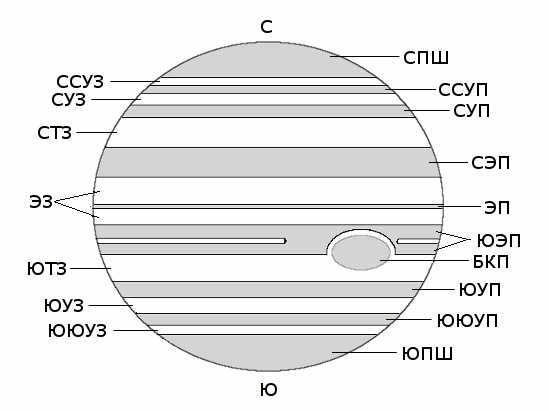
The most effective way to familiarize yourself with Jupiter is to begin with a general overview of the planet. This entails learning about its most prominent and largest features, such as belts, zones, and spots. On the planetary disk, the following areas can be distinguished:
- NPS – North Polar Cap
- North-North Temperate Zone – North-North Temperate Zone
- NNTR – North-Northern Temperate Belt
- NNZ – Northern Temperate Zone
- NTR – Northern Temperate Zone
- NTZ – Northern Tropical Zone
- NEP – Northern Equatorial Zone
- EZ – Equatorial Zone
- EF – Equatorial band
- SEP – Southern Equatorial Belt
- SAT – Southern Tropical Zone
- SUTZ – Southern Temperate Zone
- SSZ – Southern Temperate Zone
- SSM – South-South Temperate Zone
- SSZ – South-South Temperate Zone
- SSH – South Polar Cap
- BKP – Great Red Spot
It is worth noting that belts are darker in color, while zones are lighter.
To further explore Jupiter, the next phase involves examining the intricate elements of its atmospheric composition. Numerous aspects of this can only be observed through large amateur telescopes, necessitating ideal observing conditions and proficient skills.
Crimson, ivory, and shadowy blemishes
As mentioned earlier, Jupiter is constantly experiencing the emergence and disappearance of new patterns. However, there are certain formations that persist in its atmosphere for extended periods of time. One such well-known formation is the Great Red Spot (GRS), which was initially observed by Giovanni Cassini of Italy in 1665. For centuries, the true nature of this formation remained a mystery. However, thanks to the efforts of the space stations “Pioneer” and “Voyager”, we now understand that the GRS is a long-lasting vortex in the atmosphere, measuring 15 thousand by 30 thousand km, and completing a full revolution around its center in 6 Earth days.
From the perspective of a novice astronomy enthusiast who plans to observe this extraordinary phenomenon, it should be noted that BKP serves as a distinct feature that can be observed through small telescopes. However, BKP possesses the ability to alter the intensity of its hue, resulting in periods where it may become scarcely visible. This occurrence was documented in the late 19th century, but in the 1960s, the spot regained its vibrant pink shade and became clearly perceptible through small telescopes. Presently, the spot, if I may add, remains in a somewhat “average” state. Another distinctive characteristic of the spot is its continuous reduction in size, which has been consistently observed over the course of many years. Therefore, according to observers, it is known that a century ago, the spot was approximately twice its current size.
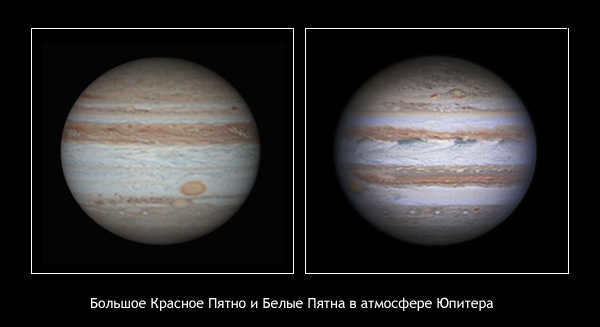
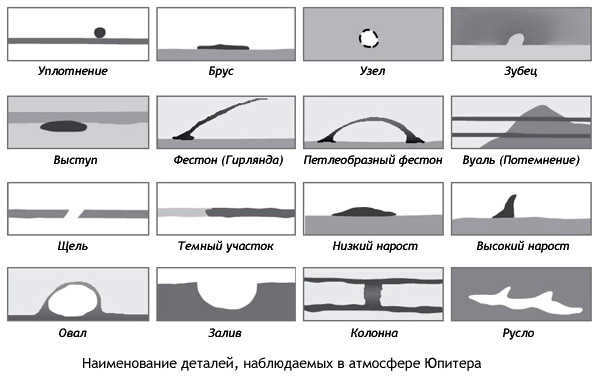
A unique and captivating occurrence in the atmosphere of Jupiter is the creation of dark spots due to the impact of asteroid and comet fragments on the planet. Back in 1994, these fragments were from the Shoemaker-Levy 9 comet. Another consequence of a similar collision appears to be the discovery of the Black Spot, which was found by Australian amateur astronomer Anthony Weasley in the summer of 2009 using a 35 cm telescope. This serves as confirmation that even in the 21st century, amateur astronomers who possess systematic observation skills, a strong understanding of Jupiter’s appearance, and a bit of luck can still make astonishing discoveries.
JUPITER’S MOONS
While Jupiter has more than 60 satellites, the astronomy enthusiast is only interested in the four brightest ones that were discovered by Galileo Galilei four centuries ago. These moons, along with the Moon and Saturn’s satellite Titan, are the largest satellites of any planets in the solar system. Anyone interested in astronomy can repeat Galileo Galilei’s observations with just binoculars or a small telescope. All they need to do is locate Jupiter in the night sky and aim their binoculars or telescope towards it. Next to Jupiter’s yellowish-orange disk, they will see four stars known as the “Galilean moons” – Io, Europa, Ganymede, and Callisto. These satellites orbit the planet at a rapid pace, and within 30 minutes, one can already observe changes in their positions relative to Jupiter’s disk.
| Satellite | Angular size | Sv. vel. |
| Io | 1.05 ” | 5.43 m |
| II Europa | 0.87 ” | 5.57 m |
| III Ganymede | 1.52 ” | 5.07 m |
| IV Callisto | 1.43 ” | 6.12 m |
Satellite shadows
An observer equipped with a telescope measuring 150-200 mm will witness a completely distinct sight. Through this instrument, it becomes evident that the shadows of the satellites bear no resemblance to each other. The appearance of these shadows is directly influenced by the varying sizes of the satellites and their respective distances from Jupiter. On nights that are clear and calm, one can easily discern that the shadows cast by Io and Europa (the closest and smallest moons of the four Galilean satellites) possess sharp boundaries and take the form of small black spots. Conversely, the shadows produced by Ganymede and Callisto are larger in size, less defined, and exhibit more implicit boundaries.
Occasionally, it is possible to witness a dual passage of shadows – when the disk of Jupiter simultaneously experiences shadows from two satellites. This occurrence is intriguing because it allows the observer to visually compare the shadows. It is even more unusual to witness a triple shadow passage.
Satellites crossing in front of the planet
Another captivating phenomenon, although challenging to witness, is the crossing of a satellite in front of Jupiter’s disk. The difficulty lies in the fact that satellites do not stand out against the bright backdrop of the planet. To observe the satellites against the backdrop of Jupiter’s clouds, you will need a powerful telescope, clear and tranquil atmospheric conditions, and familiarity with the following characteristics:
1. Satellites are more noticeable against the planet’s background when observed near the edge of the disk.
2. Satellites become more prominent against the planet’s dark belts.
The frigid moon Europa reflects 68% of the sunlight it receives, making it the brightest satellite in Jupiter’s system. In contrast, Callisto is the darkest, reflecting only 19% of the light and appearing even darker than the surrounding clouds. Io has a yellowish hue, while Ganymede is the largest satellite and nearly blends in with its background.
During oppositions, when Jupiter is aligned with the Sun and Earth, it is sometimes possible to witness both a satellite and its shadow passing across Jupiter’s surface from our vantage point on Earth.
During the movement, satellites of Jupiter sometimes pass behind the planet’s disk, a phenomenon known as “covering”. There are two distinct phases of this coverage: the moment when the satellite approaches behind the planet’s disk, and the moment when it emerges from behind. In the first case, it is fascinating to observe the satellite merging with the planet, giving the impression of a slow absorption. In the second case, it first appears as a small protrusion, then elongates and eventually separates from the planet. This effect is reminiscent of a water droplet forming on a leaky faucet.
Mutual eclipses and satellite coverings
One of the most extraordinary events in the satellite system of Jupiter is the occurrence of mutual coverings and eclipses.
Approximately every 6 years (to be more precise, every 5.93 years), a series of events occur where one satellite passes in front of another over a span of several months. These occurrences are easily observable, as through a telescope one can witness the satellites approaching each other and eventually merging into an elongated drop shape. During the full coverage phase, there is a noticeable decrease in brightness as the satellites combine into a single entity. The magnitude of this decrease is influenced by various factors such as the size and reflectivity of the satellite being covered, as well as the specific phase of coverage, which can sometimes result in partial coverage. The overall brightness decrease never surpasses 62%, as at least one satellite remains fully visible from the ground for observation.
As reported by the website realsky.ru
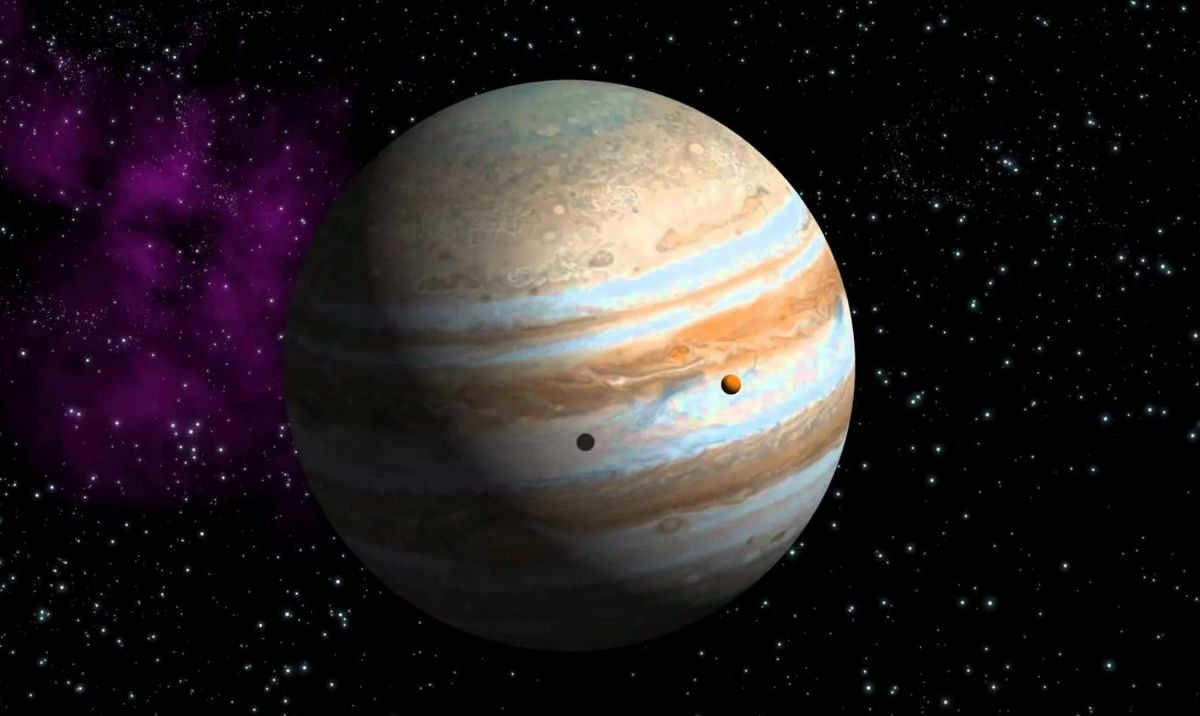
Jupiter is a gas giant composed primarily of hydrogen and helium. It is the largest planet in our solar system, with a size 11.2 times that of Earth and a mass 318 times greater.
Exploration History
Due to its prominent visibility in the sky, Jupiter has been studied since ancient times. It has been referred to by various names throughout history. The Romans named the planet after their god of sky and thunder.
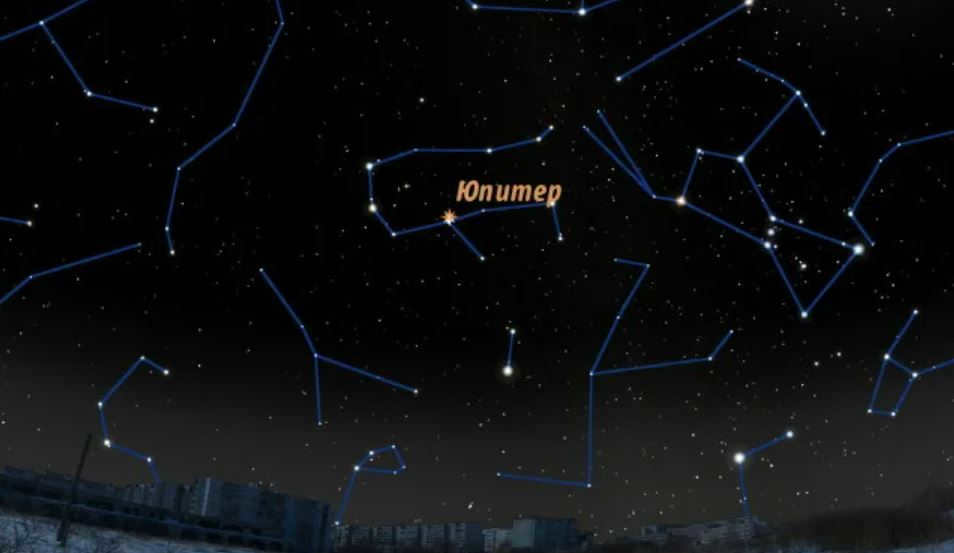
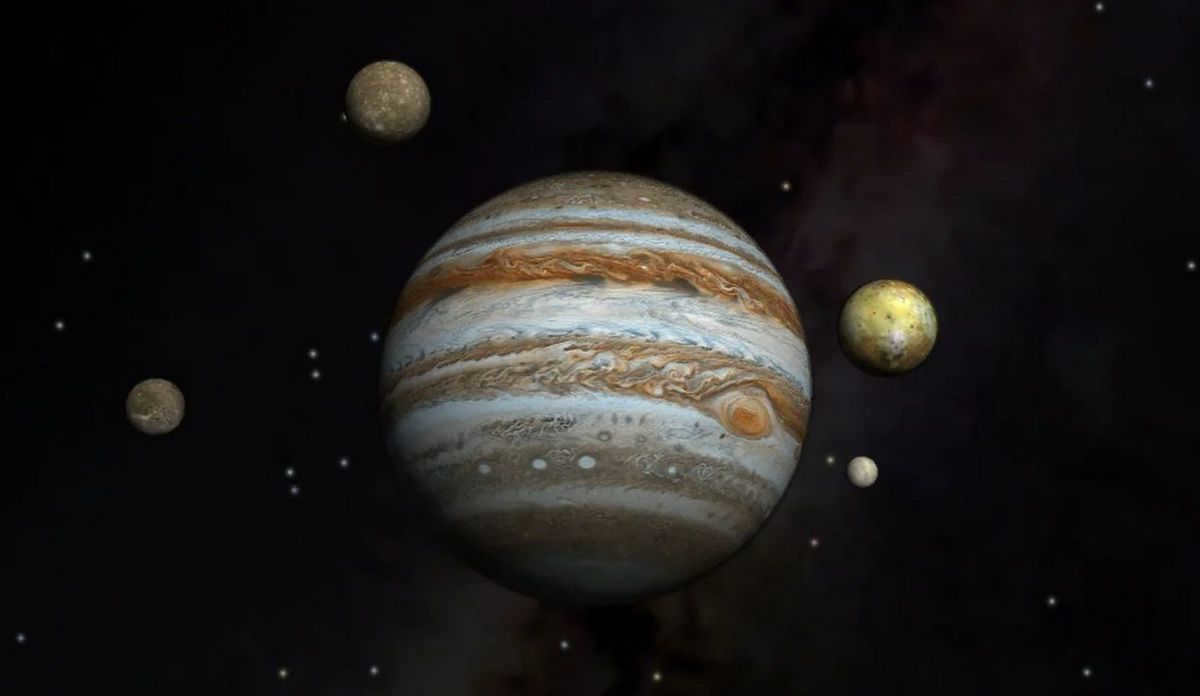
The initial scientific data about the planet was acquired in Babylon during the 8th century BC. In the 2nd century, Ptolemy devised a geocentric model and established that Jupiter completes a full orbit around the Earth in 4332 days. Several centuries later, the mathematician Ariabhata replicated the astronomer’s experiments and narrowed down the revolution period to hours.
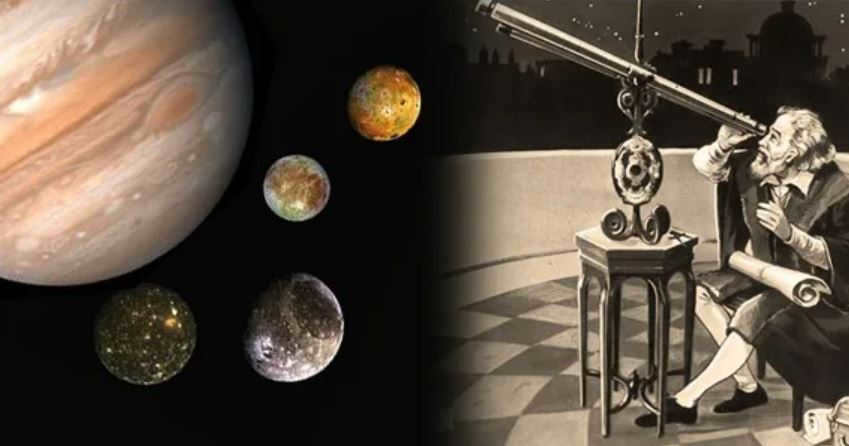
Back in 1610, Galileo Galilei had the opportunity to observe the massive gas giant through his early telescope and made an astounding discovery. He found that Jupiter had four satellites revolving around it. This ground-breaking finding shattered the belief that all celestial objects revolve solely around the Earth. Moreover, it provided substantial evidence in support of the heliocentric model, which proposes that the planets orbit the Sun.
In 1660, astronomer Cassini commenced his observations of Jupiter, utilizing an enhanced version of the telescope that enabled higher levels of magnification. After three decades, he meticulously documented the planet’s rotation on its axis, as well as delineated the various atmospheric zones that exhibit disparate rotational velocities. It was not until 1831 that Heinrich Schwabe made the groundbreaking discovery of the Great Red Spot. While Schwabe provided a thorough description of this hurricane-like phenomenon, the scientist lacked sufficient data to comprehensively elucidate its formation mechanism.
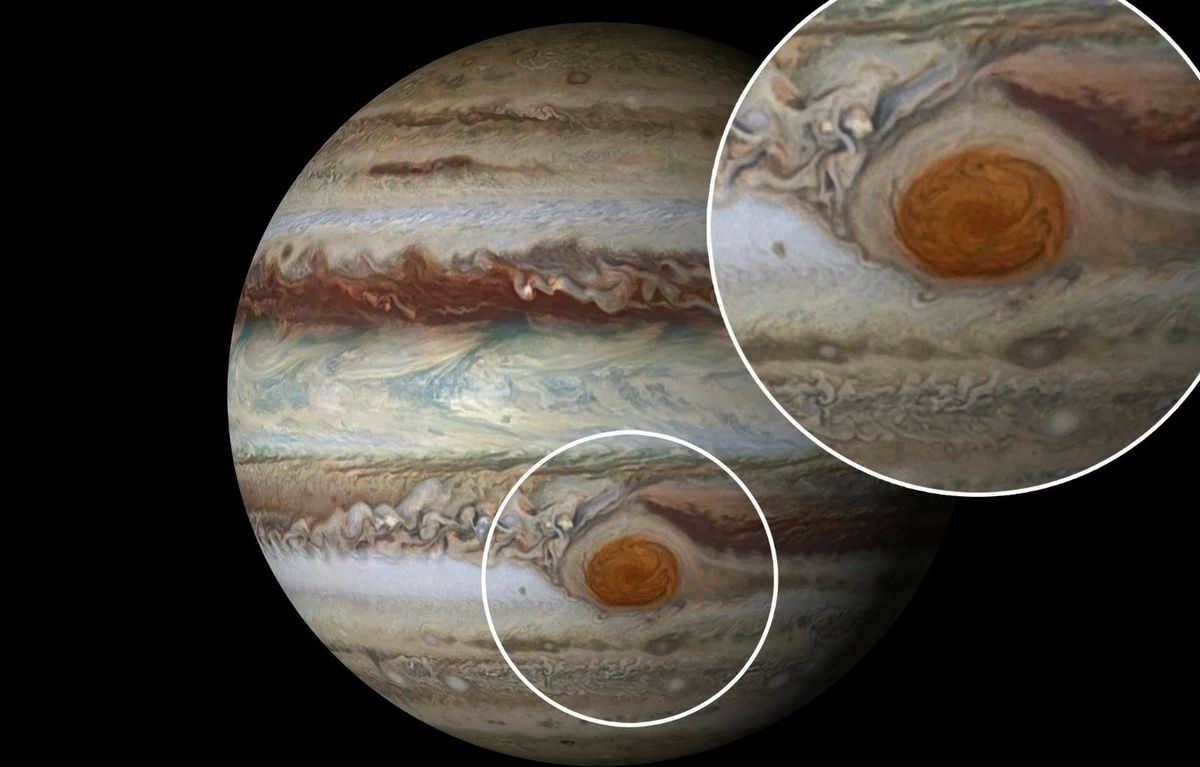
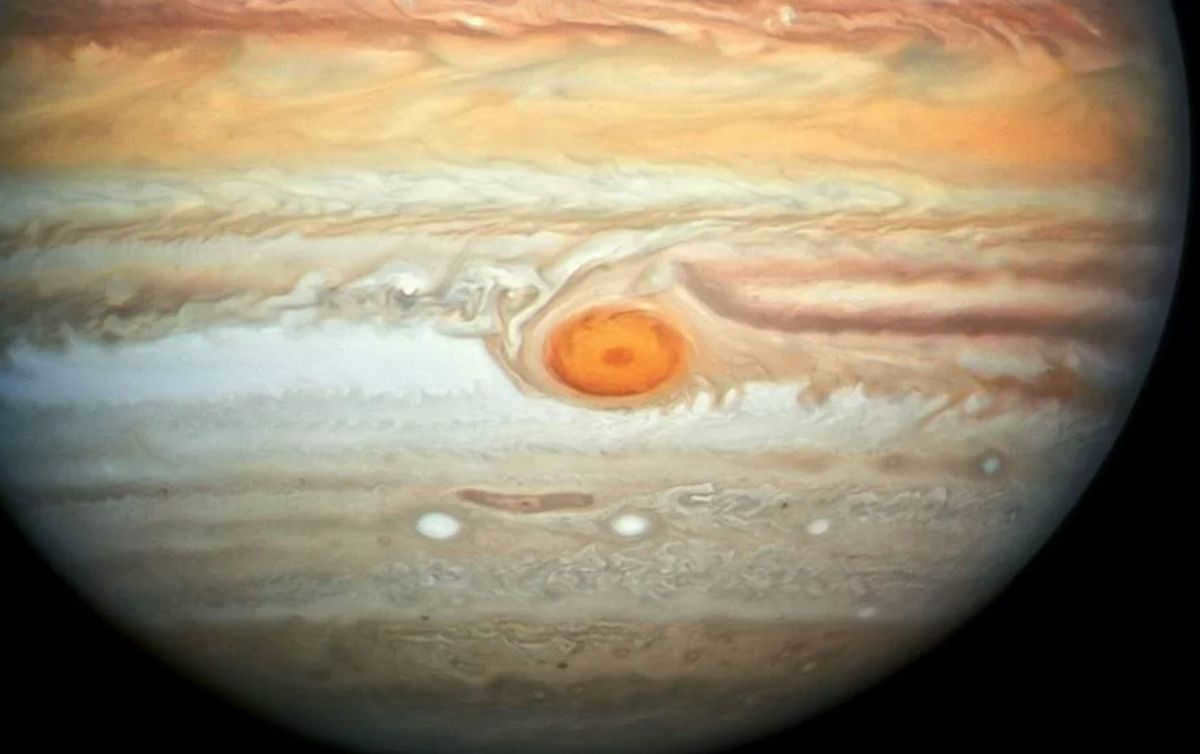
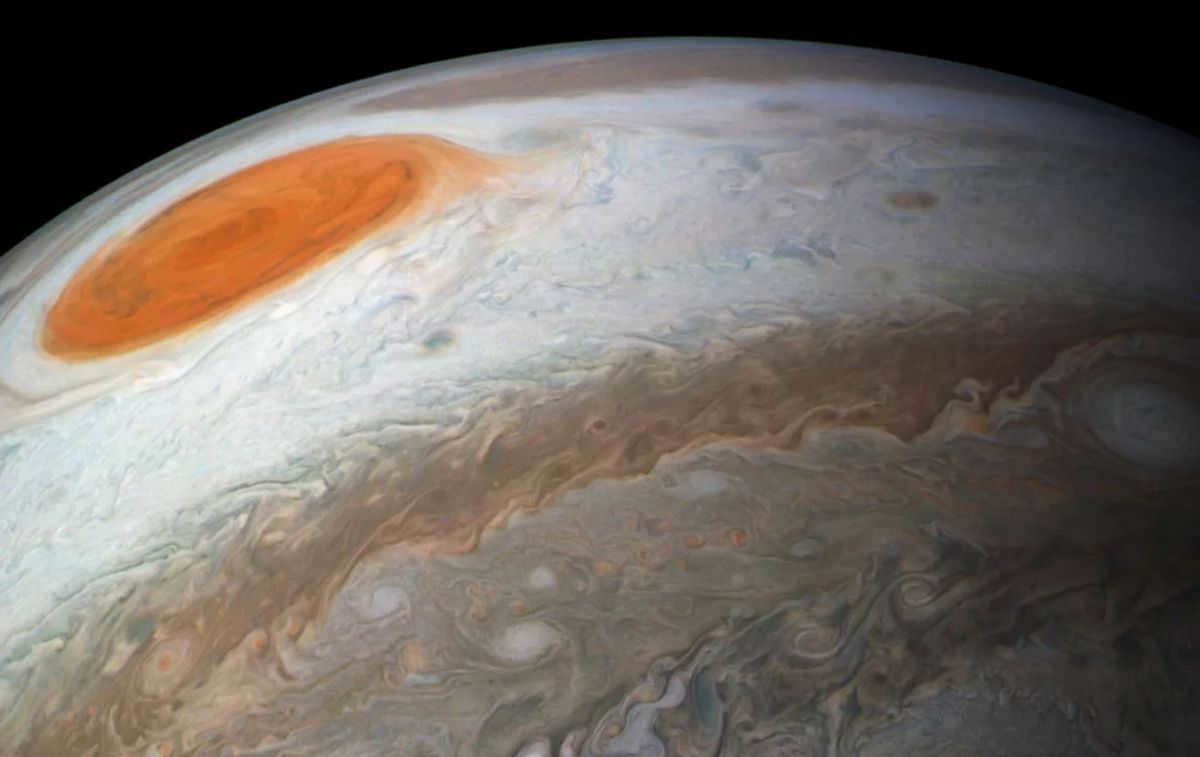
In 1892, E. Bernard spotted the fifth moon of Jupiter, Almathea, through a telescope. It was in 1955 that the precise rotation speed of this gas giant was determined, thanks to the study of radio waves and their interaction with celestial bodies.
Scientists have been closely observing Jupiter since the latter half of the 19th century, collecting valuable information in an effort to form a comprehensive understanding of the planet. However, we still have a long way to go technologically before we can send probes to explore Jupiter’s surface.
A radio telescope survey of this gas giant commenced in the 1950s, with the first signals being received in 1955. These signals were bursts of radio waves that corresponded to the planet’s rotation. Analyzing the data obtained allowed scientists to calculate the planet’s rotational speed.
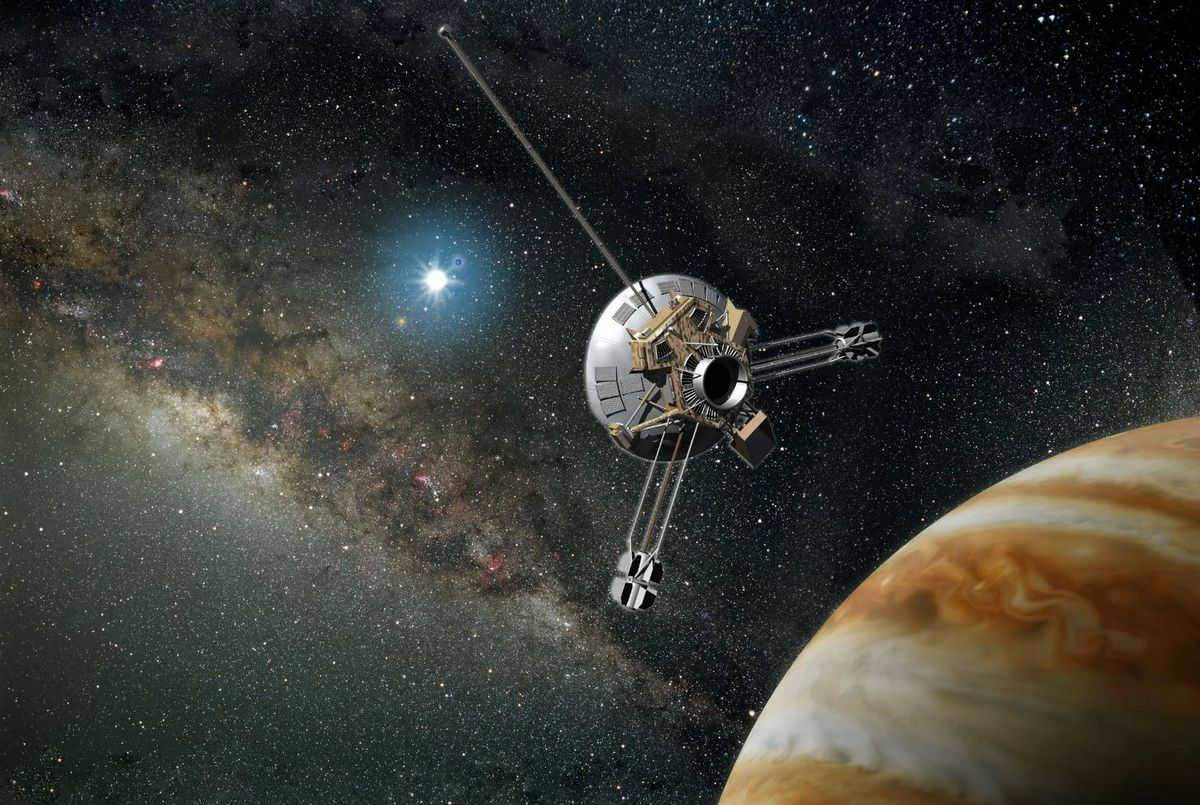

Back in 1973, the groundbreaking Pioneer-10 spacecraft embarked on a daring mission to explore Jupiter. It successfully approached the massive planet, capturing and transmitting back to Earth the very first images of its awe-inspiring surface. These images provided scientists with valuable insights and a wealth of new information about Jupiter.
Building on the success of Pioneer-10, the Voyager spacecrafts were sent to Jupiter six years later. These remarkable probes further confirmed many fascinating phenomena about the gas giant, including the anticyclonic nature of the iconic Great Red Spot and the presence of lightning on its dark side. The Voyager missions unveiled a whole new world of wonders, painting a vivid picture of Jupiter’s complex atmospheric dynamics.
Then, in 1995, the Galileo spacecraft joined the exploration of Jupiter. It entered the planet’s orbit and became an invaluable resource for studying its various features. Galileo’s strategic position allowed it to witness and document significant events, such as the spectacular arrival of comet Shoemaker-Levy 9 in 1994. This event provided scientists with a unique opportunity to observe the impact of a celestial body on Jupiter’s surface.
However, the Galileo mission eventually came to an end in 2003. As part of its final mission, the spacecraft was deliberately directed towards Jupiter, where it met its fate in a fiery crash at an astonishing speed of 50 km/s. This intentional collision provided scientists with valuable data, helping them gain further insights into Jupiter’s atmospheric composition and structure.
The year 2000 saw the Cassini spacecraft make a close flyby of Jupiter, capturing detailed images of its surface. Then, in 2016, the Juno probe conducted a comprehensive study of the planet, focusing on its magnetosphere, atmosphere, and gravitational field.
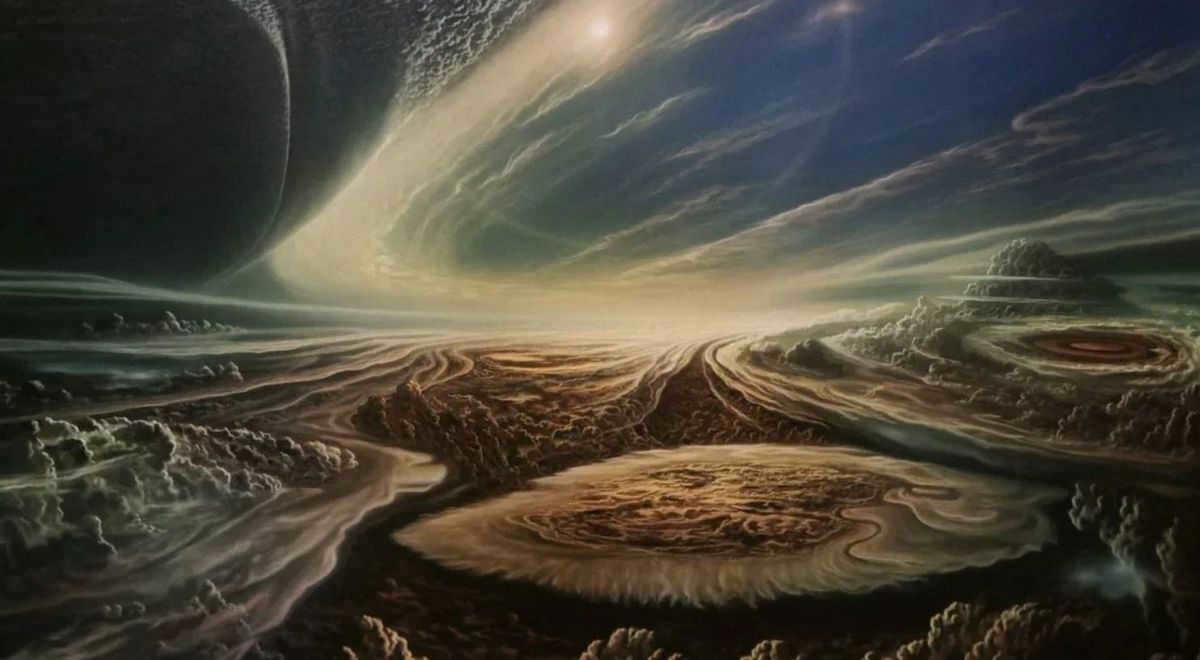
In 2022, a spacecraft named Jupiter Icy Moons Explorer (JUICE) was dispatched to Jupiter. The estimated time of arrival for JUICE is 2029. Before settling into orbit around Ganymede in 2032-2034, the spacecraft will undertake various missions exploring Europa and Callisto. Throughout these missions, JUICE will gather invaluable data.
Location and dimensions
Jupiter is situated between Saturn and Mars, holding the position of the fifth planet in our solar system. The average distance from Earth to Jupiter is approximately 778 million kilometers. Moreover, Jupiter is about 778.5 million kilometers away from the Sun. As the largest planet in the solar system, Jupiter is classified as a gas giant.
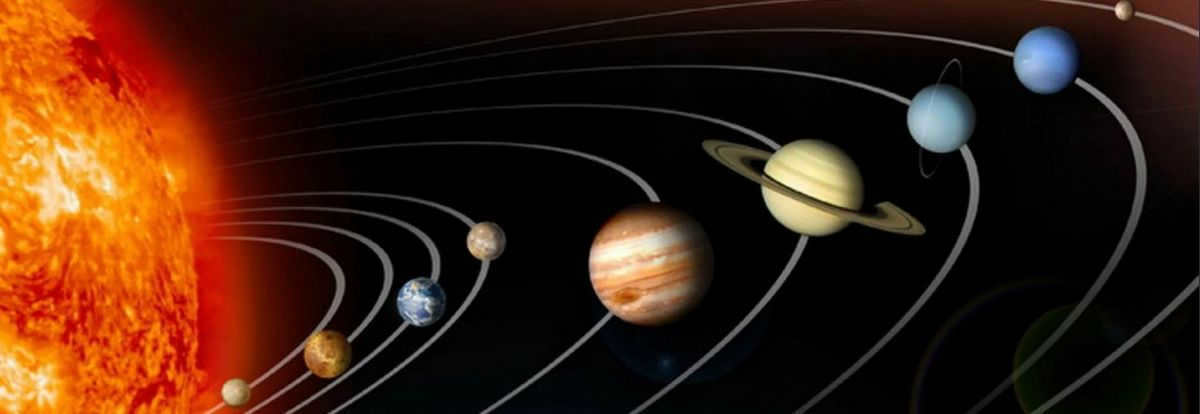
Jupiter, the biggest planet in our solar system, has a radius of approximately 70,000 kilometers and a diameter of around 139,800 kilometers. This immense size can be attributed to its early formation near the Sun, which resulted in the accumulation of a significant amount of gaseous matter around the young planet.
As a gas giant, Jupiter has a density of 1.326 g/cm3, which is approximately one-fourth that of Earth. The planet possesses a mass of 1.8981 x 10^27 kg and a volume of 1.43128 x 10^15. Its surface area measures 6.1419 x 10^10 km2, with an average circumference of about 4.9264 x 10^5 km.
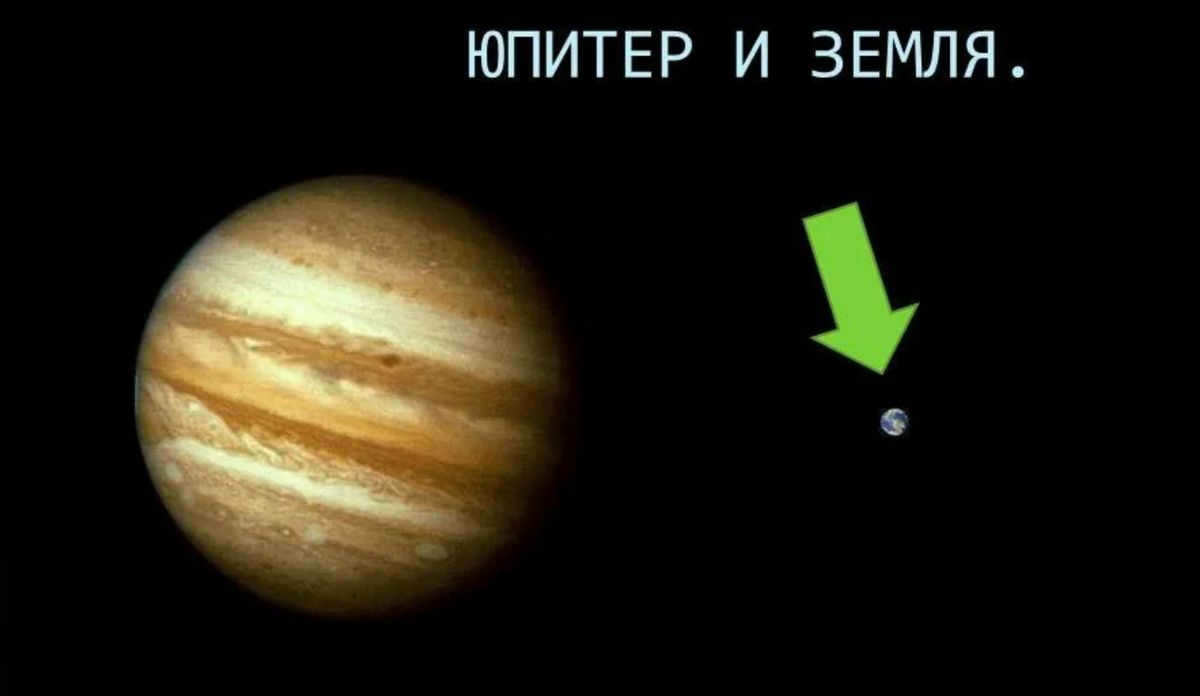
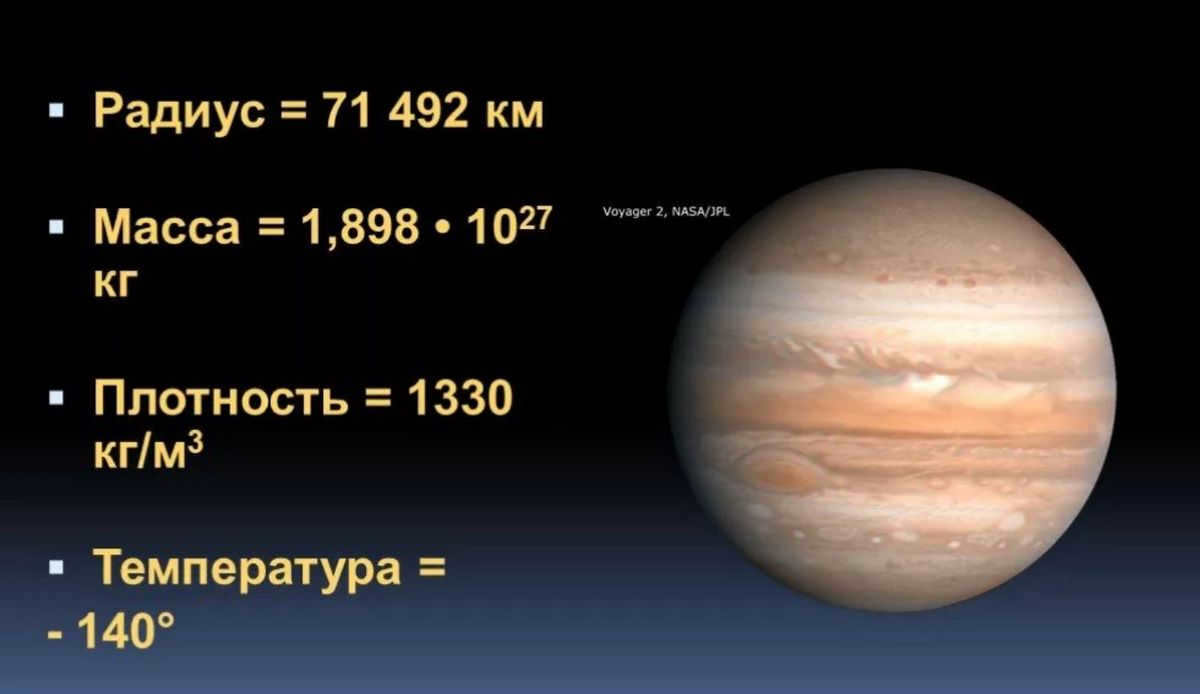
According to scientists, Jupiter’s impressive size can be attributed to its status as the initial planet to emerge in close proximity to the Sun. It effectively gathered the majority of the surrounding matter and gas billions of years ago. While subsequent solar wind dispersion affected the surrounding environment, Jupiter successfully retained some nearby objects.
Jupiter orbits the Sun in an elliptical path, taking nearly 12 Earth years to complete one revolution. Its velocity in space is around 46,800 km/h, and its orbital direction aligns with most of the other planets in the solar system. The only exceptions are Venus and Uranus, which move in the opposite direction.


The orbital properties of Jupiter:
- Jupiter is located at a distance of 740.5 million km from the Sun at perihelion;
- Jupiter is located at a distance of 816.5 million kilometers from the Sun at aphelion;
- Jupiter’s major semi-major axis is 778.5 million kilometers;
The rotation of Jupiter around its axis is so fast that day and night change in just 9 hours, 55 minutes, and 30 seconds. Compared to Earth, a day on Jupiter is one third shorter. This is because Jupiter spins rapidly.
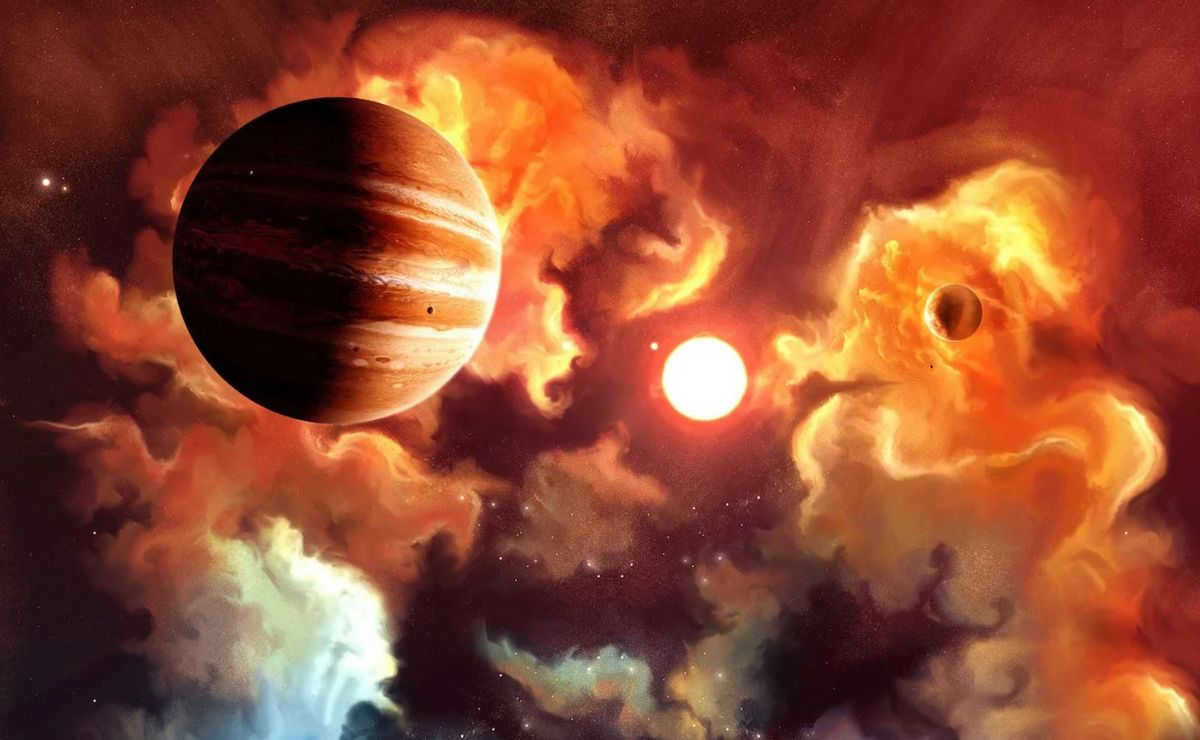

Surprisingly, the duration of the day is directly linked to the rotation period, rather than the size of the planet as one might anticipate. On Jupiter, this period amounts to 45,300 km/h. Consequently, the days pass by swiftly, resulting in a total of 10,475.8 days per year. However, this rapid rotation gives rise to a substantial number of storms on the planet. A year on Jupiter spans 4333 Earth days, which is equivalent to 11.8 years.
The characteristics of Jupiter’s axial rotation have been known for quite some time, owing to the planet’s considerable size. As early as the 17th and 18th centuries, astronomers were able to observe specific details on its surface using telescopes. Nowadays, even amateur astronomers can witness individual features on Jupiter with small telescopes.
Composition and Surface
In truth, the gas giant is comprised of varying states of hydrogen, along with traces of other compounds.
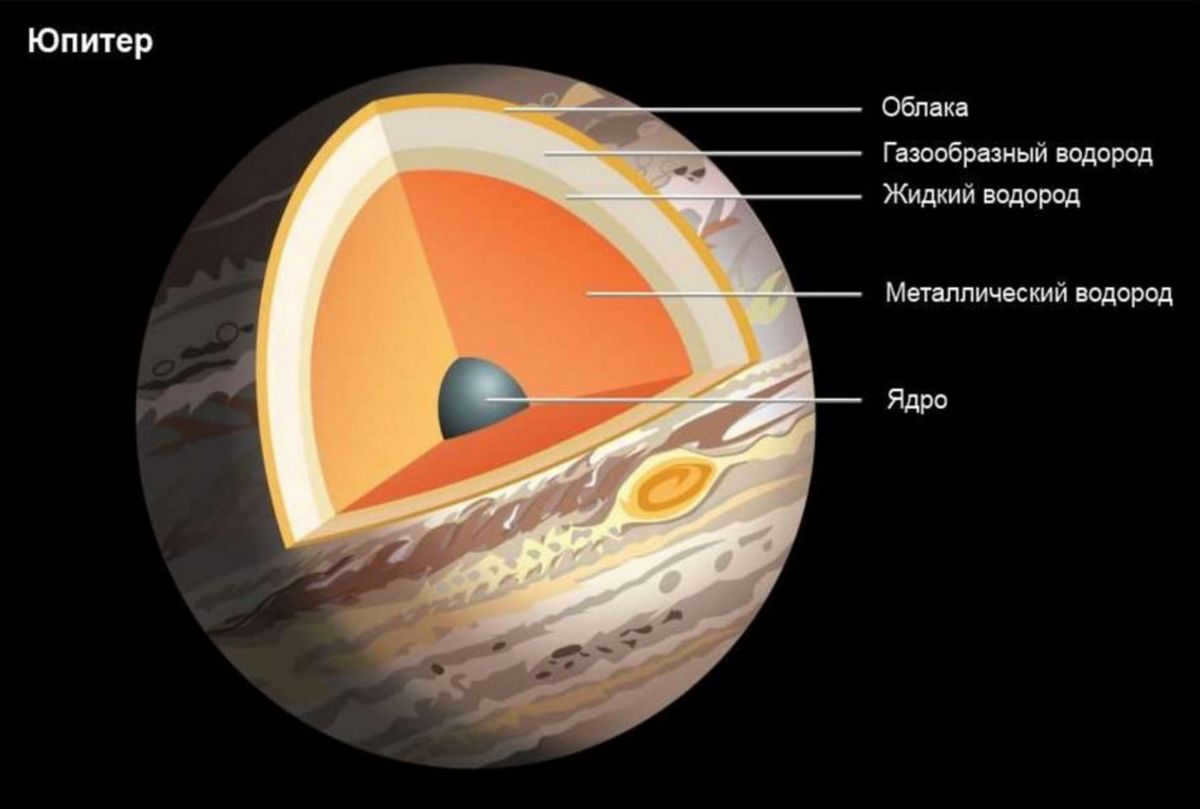
Scientists are still debating whether the core of Jupiter is perfectly spherical or has a rocky shape. Its existence was confirmed in 1997 when gravity was detected on the planet. Preliminary estimates suggest that the core is composed of liquid metallic hydrogen and helium, and its mass could range from 4 to 14% of the entire planet.
As we delve deeper into Jupiter, we encounter its next layer, which is made up of liquid hydrogen with similar impurities. Below this layer lies a level of metallic hydrogen.
The core, located at the center of the planet, remains a subject of debate among scientists. They have yet to determine whether it is a perfect sphere or has a rocky composition. Its existence was confirmed in 1997 when Jupiter’s gravitational pull was observed. The core is believed to consist of liquid metallic hydrogen and helium, with an estimated mass ranging from 4 to 14% of the planet’s total.
According to estimates, the temperature at the core of Jupiter is around 35,700 degrees Celsius, with a pressure of 4,500 GPa. In contrast, the surface temperature is thought to be a mere 67 degrees Celsius, with a pressure of 10 bar. It is important to note that these figures are purely theoretical and the actual conditions may vary significantly. The values are derived from surface observations and remote studies, as modern probes are unable to approach the outer layers due to intense radiation.
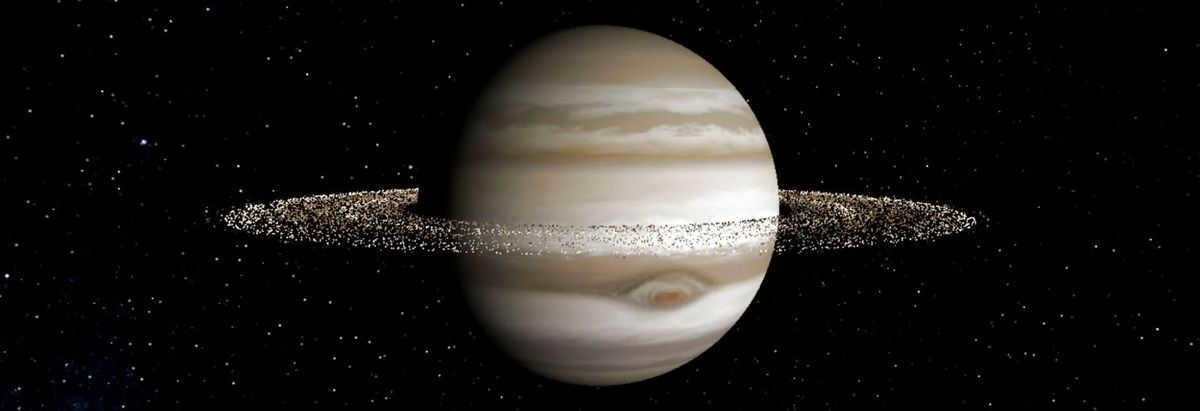
Jupiter possesses a set of rings, although they do not possess the same level of prominence as those of Saturn. Comprised primarily of dust and tiny particles, these rings are held together by the powerful gravitational force exerted by the gas giant. Scientists speculate that Jupiter’s rings formed as a result of frequent collisions between its moons and asteroids. Following these collisions, small objects were ejected into outer space and subsequently drawn in by the planet’s gravitational pull. Over time, the planet’s rapid rotational speed caused these objects to coalesce into the distinct rings we observe today.
Jupiter’s atmospheric conditions and climate patterns
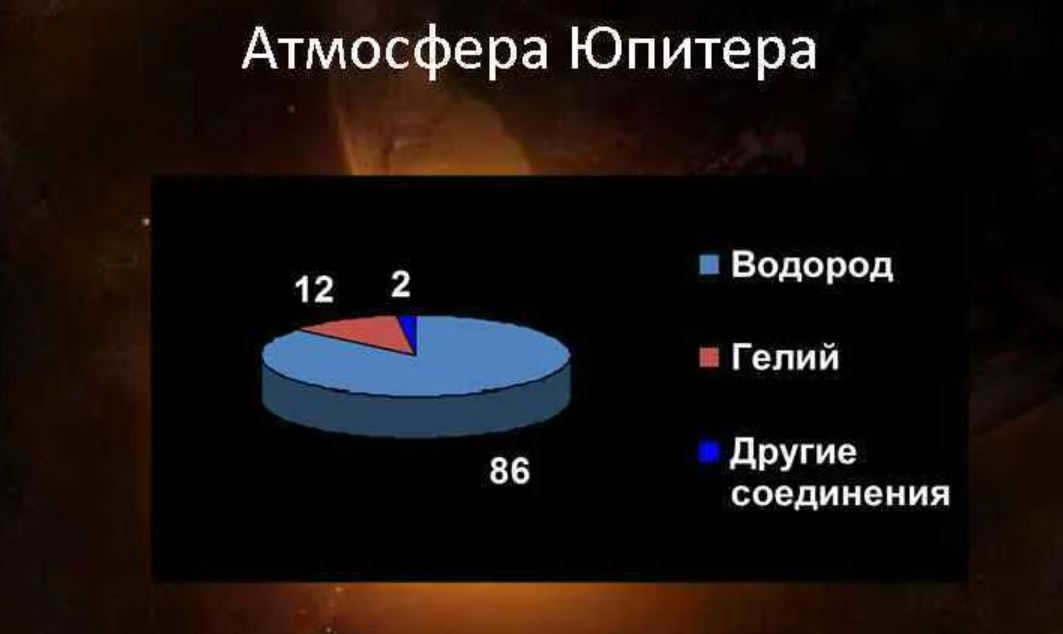
Jupiter, the largest planet in our solar system, boasts an atmospheric layer that spans a whopping 1000 km. The atmospheric pressure on this gas giant ranges from 20 to 220 kPA, making it considerable. Composed primarily of hydrogen (88-92%) and helium (8-12%), Jupiter’s atmosphere also contains traces of methane, ammonia, silicon, benzene, and water vapor.
Additionally, the atmosphere of Jupiter houses minuscule amounts of carbon, hydrogen sulfide, sulfur, phosphine, oxygen, ethane, and neon. Below the atmospheric layer lies a hydrogen gas region where helium and other substances are dissolved.
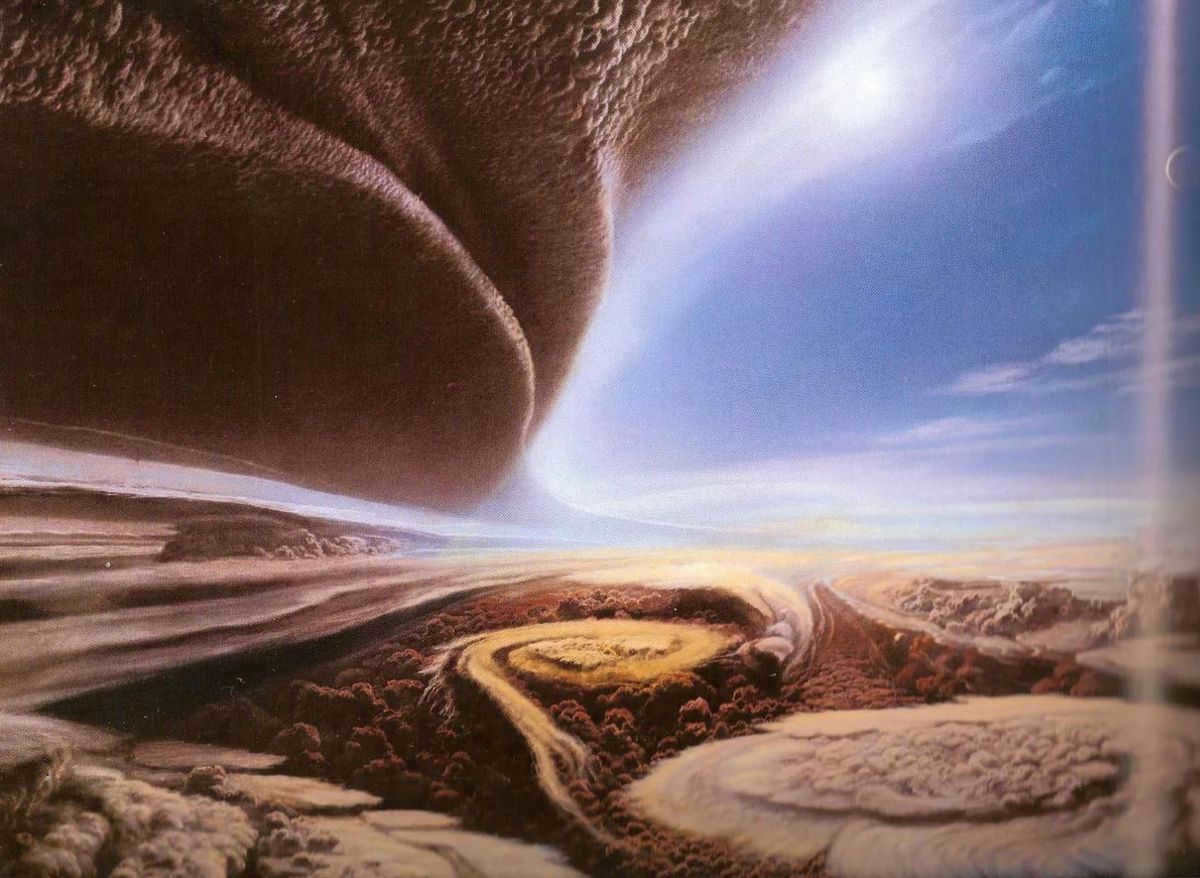
The atmosphere is divided by scientists into the following layers:
The composition of these layers remains constant, with only the temperature and pressure varying. While the temperature gradually increases, the pressure gradually decreases. It is worth noting the troposphere, which experiences a significant loss of heat and is responsible for the formation of polar lights.
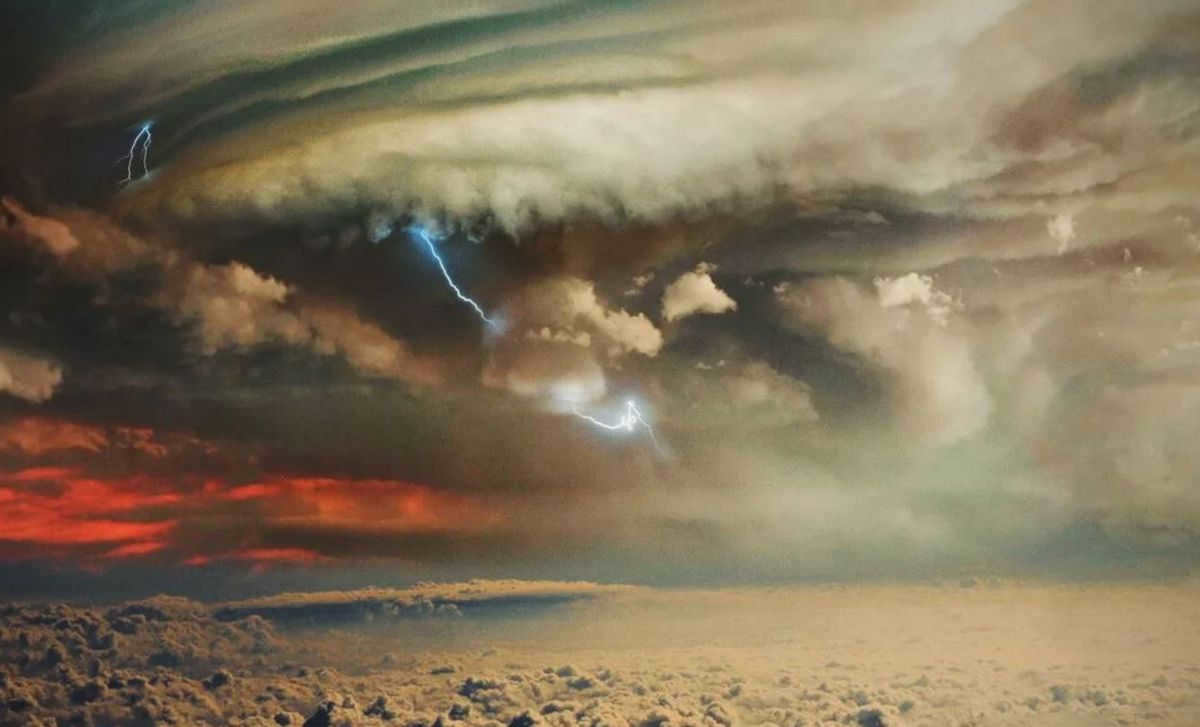
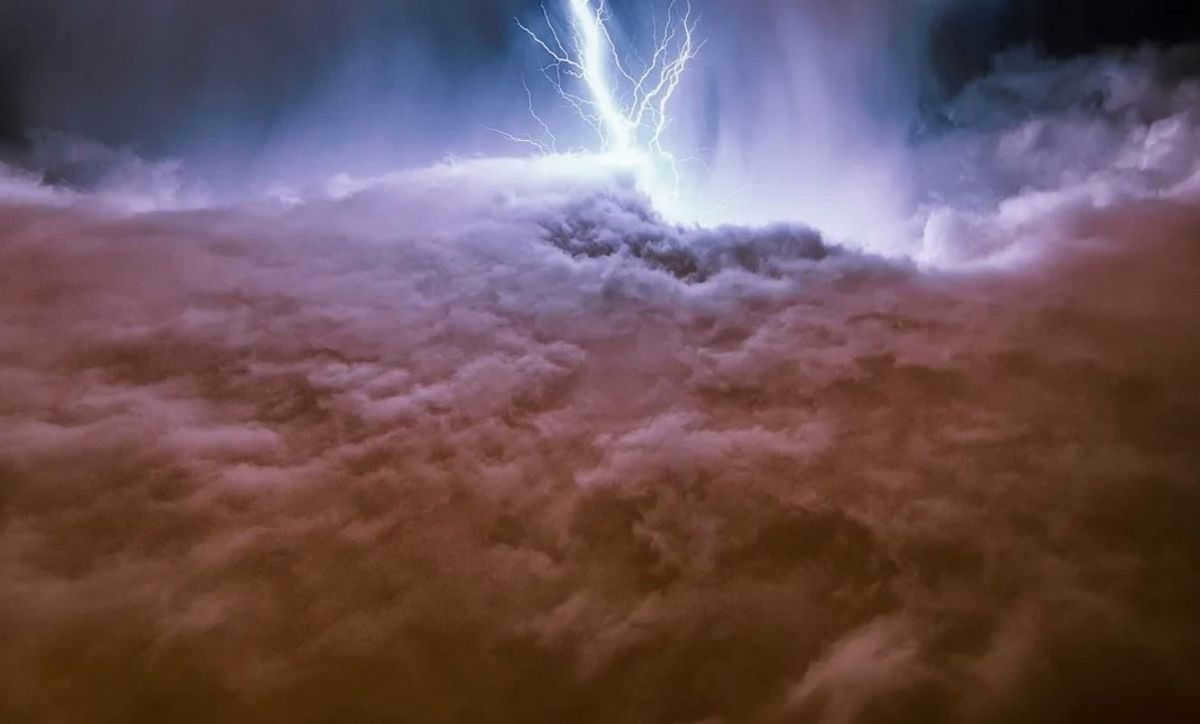
On the outer layer of the massive planet, there is a prevailing presence of negative temperature, which can drop as low as minus 170 degrees. The lower layers of the atmosphere do not exhibit significant variations in temperature, with an average measurement of minus 145 degrees.
As we ascend to the higher levels of the cloud formations, starting at an elevation of 320 km, the thermal characteristics begin to intensify. And at the boundary between the thermosphere and exosphere (around 1000 km), the temperature can soar to 600 degrees Celsius. Scientists are still perplexed as to why the climatic conditions in Jupiter’s atmosphere become progressively hotter as one moves away from the surface. According to all predictions, the temperature of the upper layers should either decrease or remain similar to that of the tropopause.
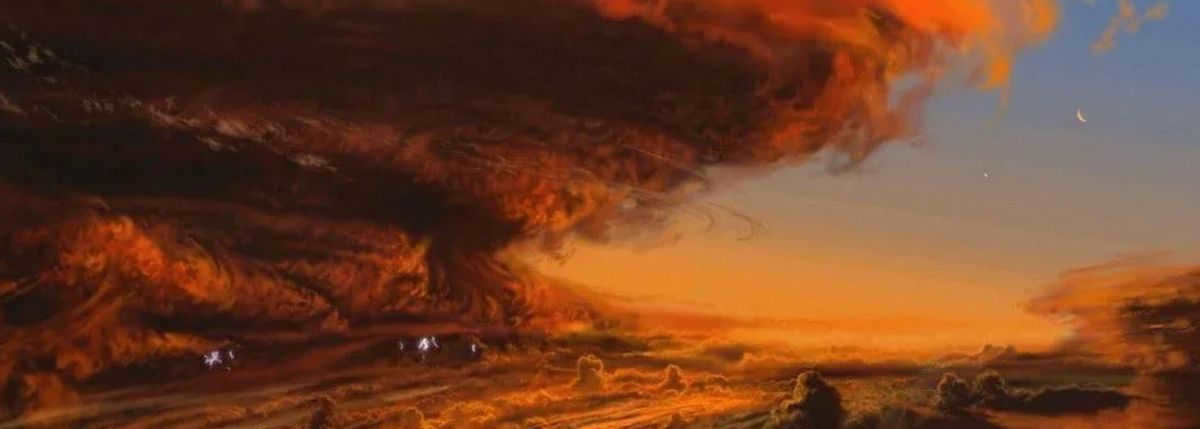

Jupiter’s climate consists of an eternal tempest made up of impenetrable clouds that possess specific dimensions, temperatures, and pressures. Cyclones and tempests perpetually roam the planet’s surface, capable of traversing its expanse at speeds reaching 600 km/h. The location and form of these weather phenomena can undergo significant transformations in a matter of mere hours.
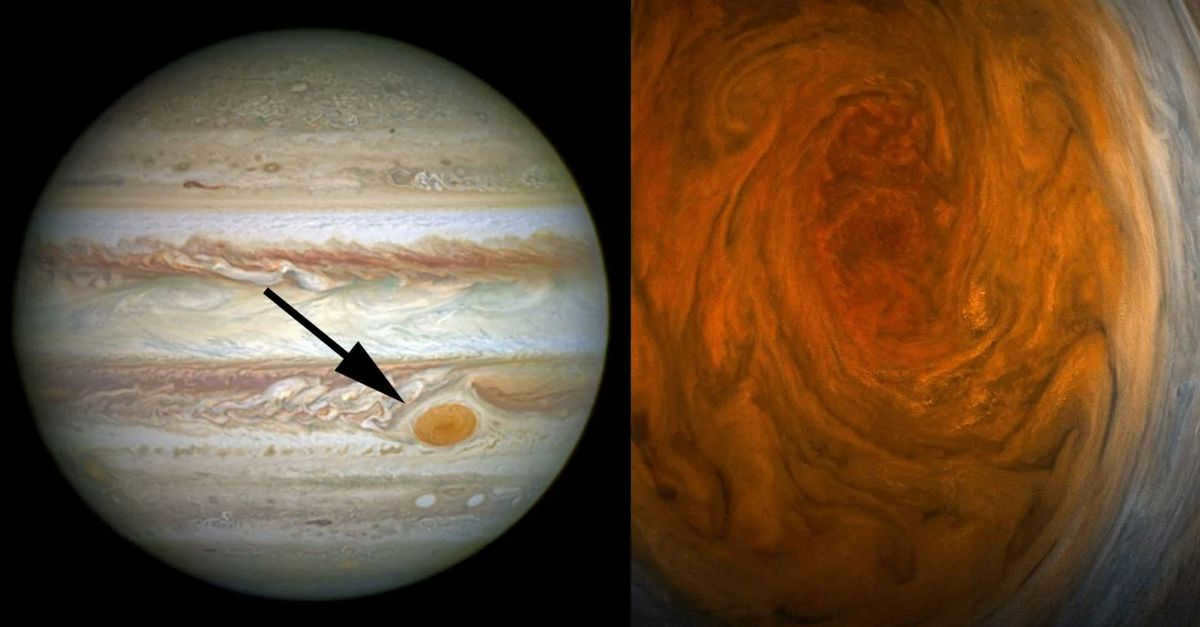

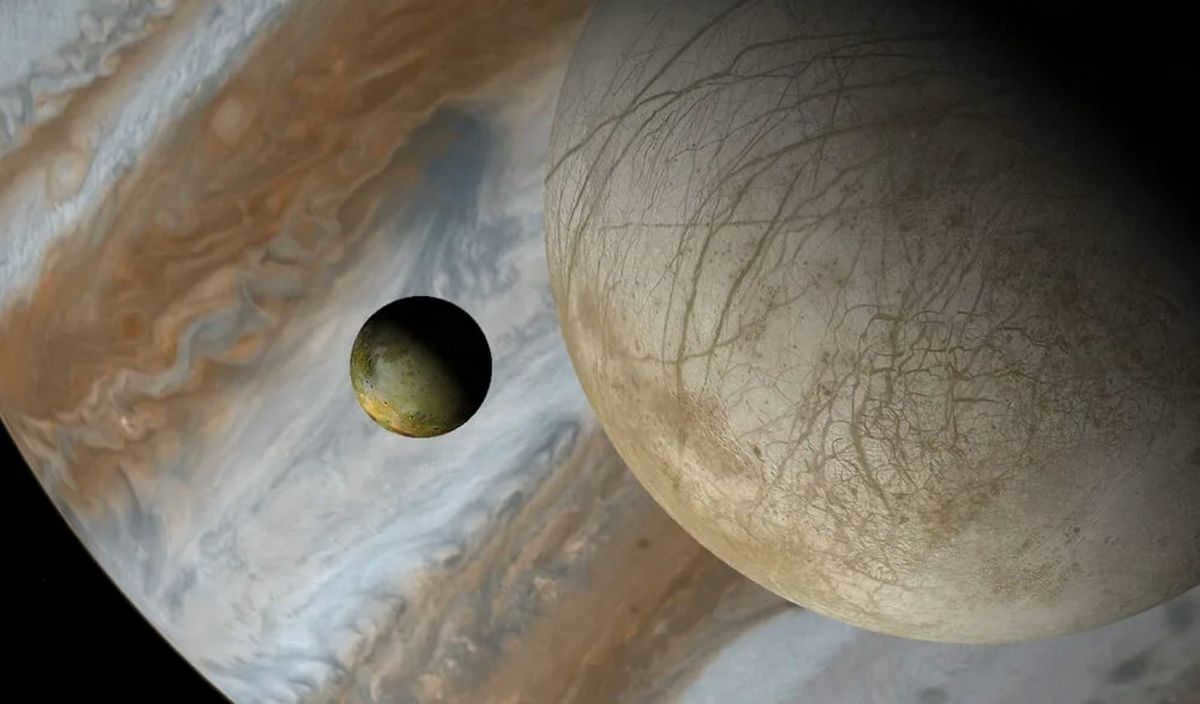
The objects listed below have the following names and characteristics:
Jupiter’s nearest celestial body, it measures 3,642 kilometers in diameter. Its surface is yellow in color due to its high sulfur content, and it boasts over 400 active volcanoes, setting a record among all objects in the solar system.
This moon is renowned for its smooth surface. It has a diameter of 3,120 km and is almost devoid of craters. However, it does have cracks and stripes, which give Europa a gray-brown hue.
With a diameter of 5,268 km, this is the largest moon in the solar system. Its surface features a combination of cratered and rocky regions. Ganymede appears gray due to the presence of silicate rocks and icy lakes. There is a hypothesis that liquid water exists beneath its icy crust.
The satellite, which measures 4,820 kilometers in diameter, is comprised of a combination of ice and rocks. Due to the lack of intense radiation in its vicinity, there is a possibility of setting up a station in the future to study Jupiter.
Every year, the number of satellites continues to grow with new discoveries. Four of Galileo’s group of objects remained unknown to others for 300 years until E.E. Bernau finally detected the satellite Almathea in 1892.
The majority of new satellites were found and documented by scientists during the 20th century. During this time, the following satellites were discovered and described:
Voyager 10 made an exciting discovery when it found Mathis, Adrastei, and Teba. This brings the total number of satellites discovered around Jupiter to 80, with the latest addition being made in 2021. However, thanks to advancements in technology and optics, there is a possibility that the list of Jupiter’s satellites could continue to expand. Scientists believe that the final count could reach as high as a hundred. It is interesting to note that many of these discovered satellites are given names that pay homage to mythological heroes or have connections to the rich Greco-Roman pantheons.
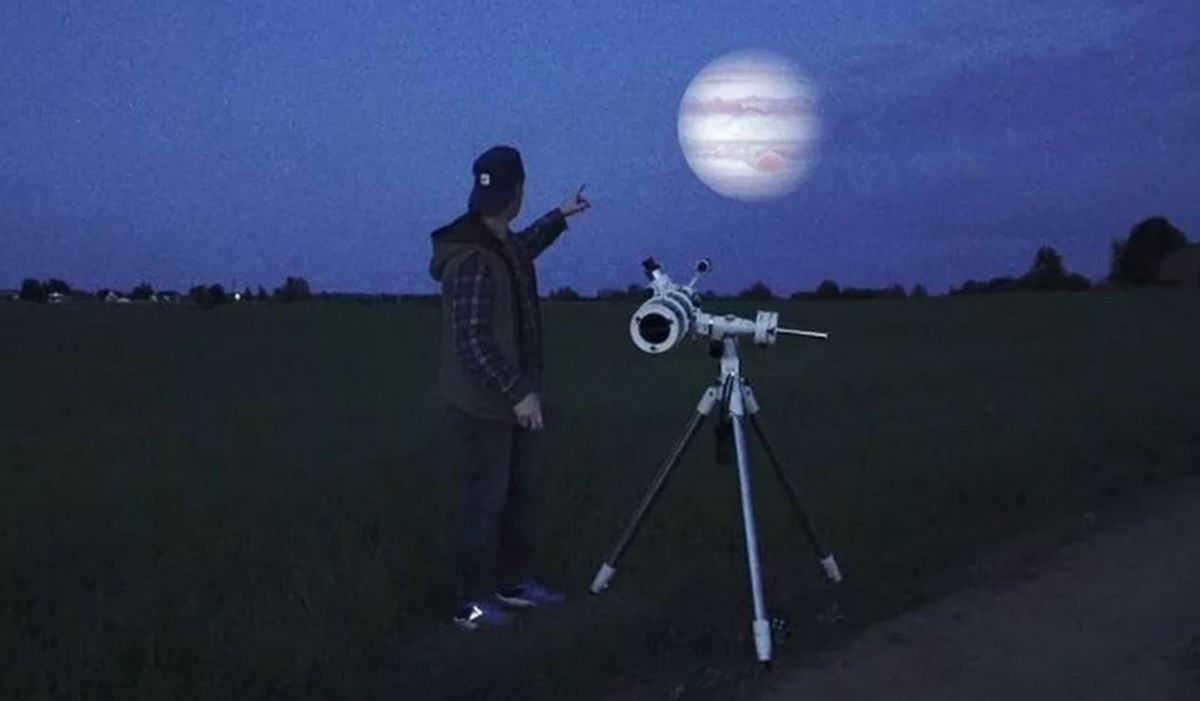
The optimal time to observe Jupiter is during its opposition, which occurs when the planet is closest to Earth. This phenomenon is common for outer planets and happens annually, typically shifting by about a month compared to the previous year’s date.
Typically, during summer oppositions, Jupiter does not rise very high above the horizon, reaching an average of 20-30 degrees in Russia. Consequently, the most favorable periods for observing Jupiter are during winter oppositions, when the planet is visible high in the sky throughout the entire night. If the observer is not deterred by the cold weather, they have the opportunity to witness Jupiter complete a full rotation on its axis in a single night.
To familiarize yourself with Jupiter, it is advisable to begin with a comprehensive overview. Primarily, one should acquaint themselves with the prominent and expansive features such as belts, zones, and spots. Subsequently, delving into the intricacies of the atmosphere’s composition is the next step in understanding Jupiter. Numerous aspects can only be observed through powerful amateur telescopes and necessitate optimal viewing conditions and proficient observational abilities.
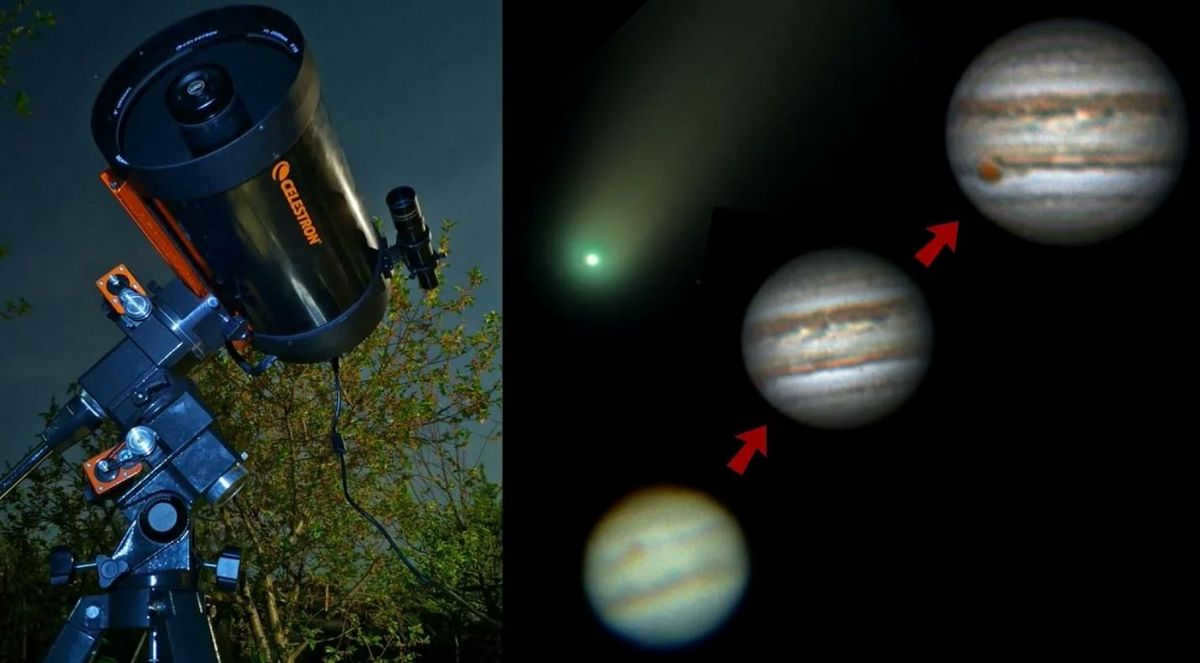
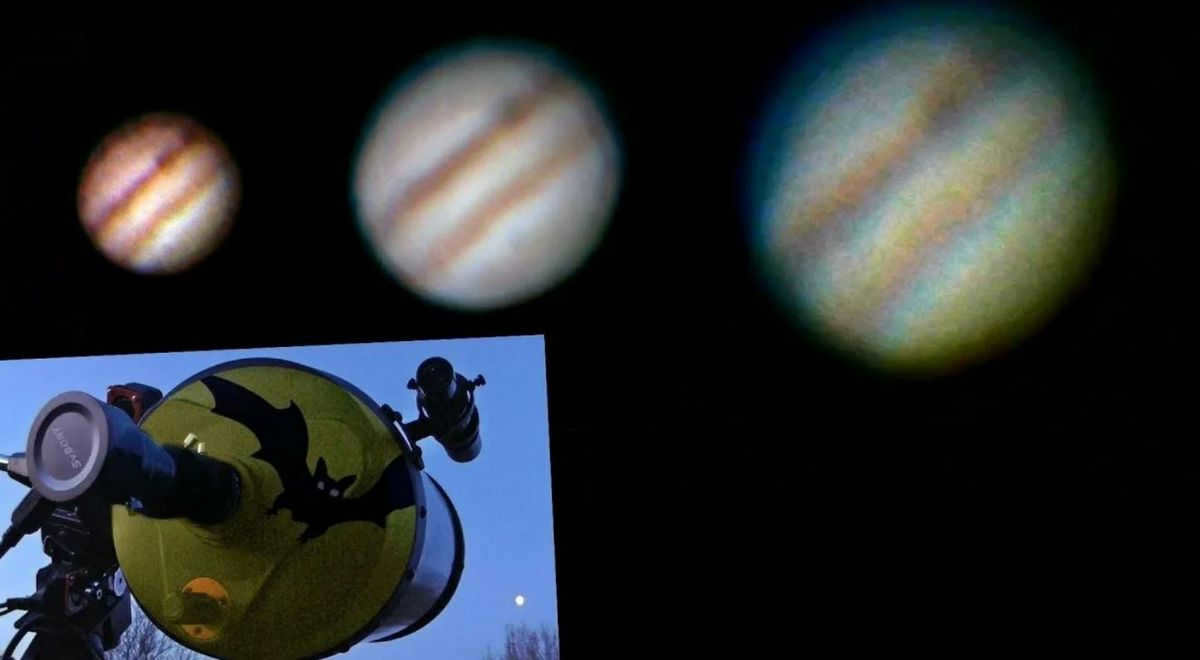
The observable features on the surface of Jupiter are determined by the size of the telescope used. During oppositions, the apparent diameter of the planet’s disk can reach 45-50 seconds of arc, which is larger than most other planets. However, even at high magnifications of 250-300x, the disk still appears relatively small.
The level of detail that can be seen also depends on the quality of the optics. For instance, when using binoculars, one can see a small, unremarkable disk with no discernible features, along with the four Galilean satellites that orbit the planet.
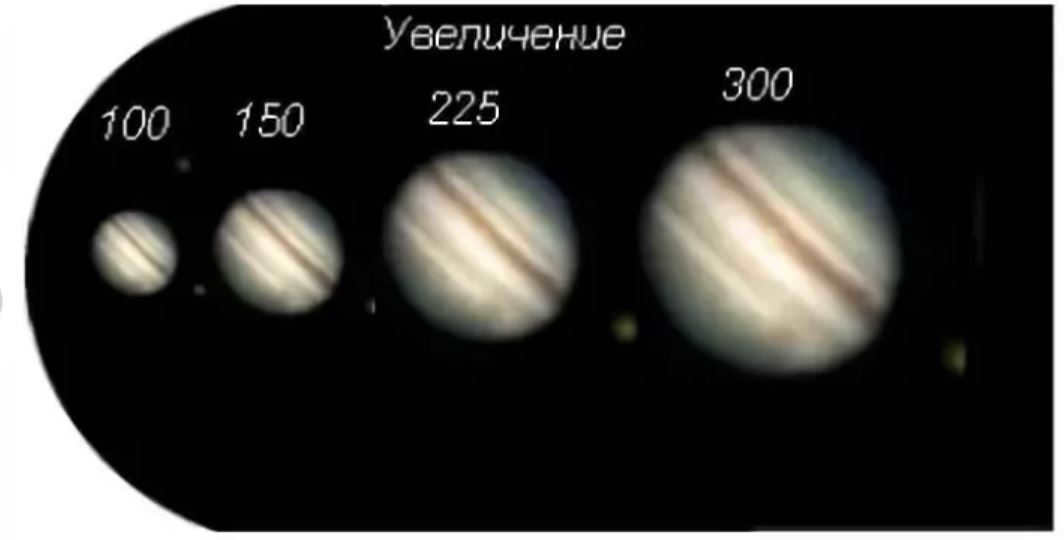
If you aim a small telescope (60-90 mm) at Jupiter with a 100x magnification, you will be able to observe the northern equatorial belt (NEB) and the southern equatorial belt (SEB) situated just above and below the planet’s equator, respectively. Additionally, you can see the Southern Temperate Belt (STB), which lies between the SEB and the southern edge of the planet. The Southern Tropical Zone (STZ), located between the SCE and the SPB, is a bright band where the famous Great Red Spot can be found. This oval-shaped spot appears slightly darker than the surrounding background. Upon closer examination, one can also identify the darker polar regions of Jupiter, as well as the largest formations situated in the planet’s equatorial zone.
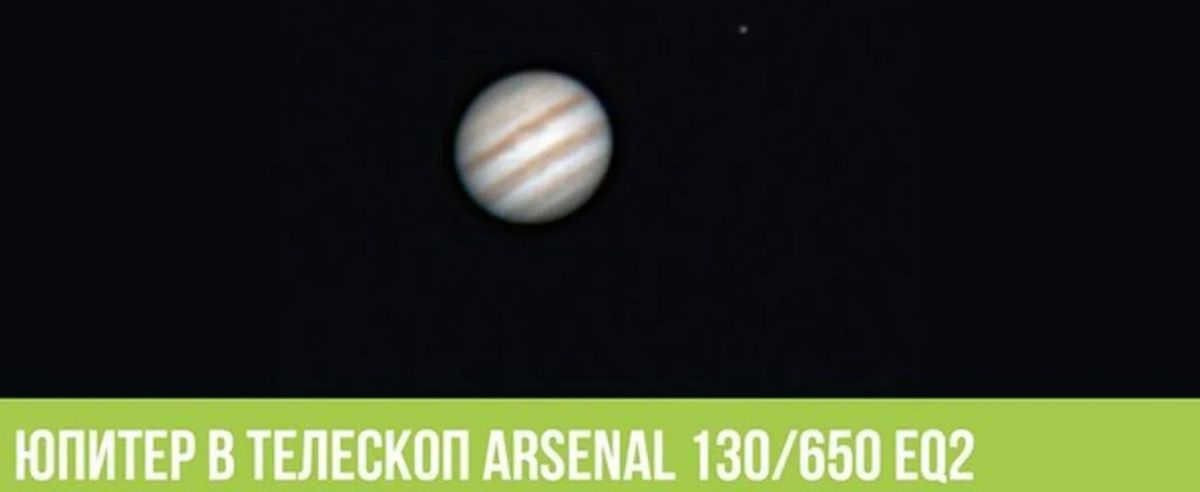
From a minimum distance of 100 mm, one can witness not just the motions of Jupiter’s four main moons, but also the crossing of their shadows over the planet’s disk, along with eclipses and coverings.
A telescope equipped with a lens measuring 150-200 mm in diameter and offering a magnification of 200-300x enables the observation of Jupiter’s delicate bands and numerous small clouds, allowing for the capture of intricate structural details and the accurate representation of various color variations.
The most effective telescope for capturing the finest details is one with a diameter of 300mm for its objective lens. Telescopes with objective lenses measuring 400-500mm are not significantly better than their smaller counterparts due to the Earth’s turbulent atmosphere and the telescope’s long thermal stabilization time, both of which contribute to the distortion of fine details. In fact, the image produced by such telescopes is often worse than that produced by smaller ones.
To enhance contrast and highlight distinct features of Jupiter’s atmosphere against the background, it is recommended to utilize a set of color filters:
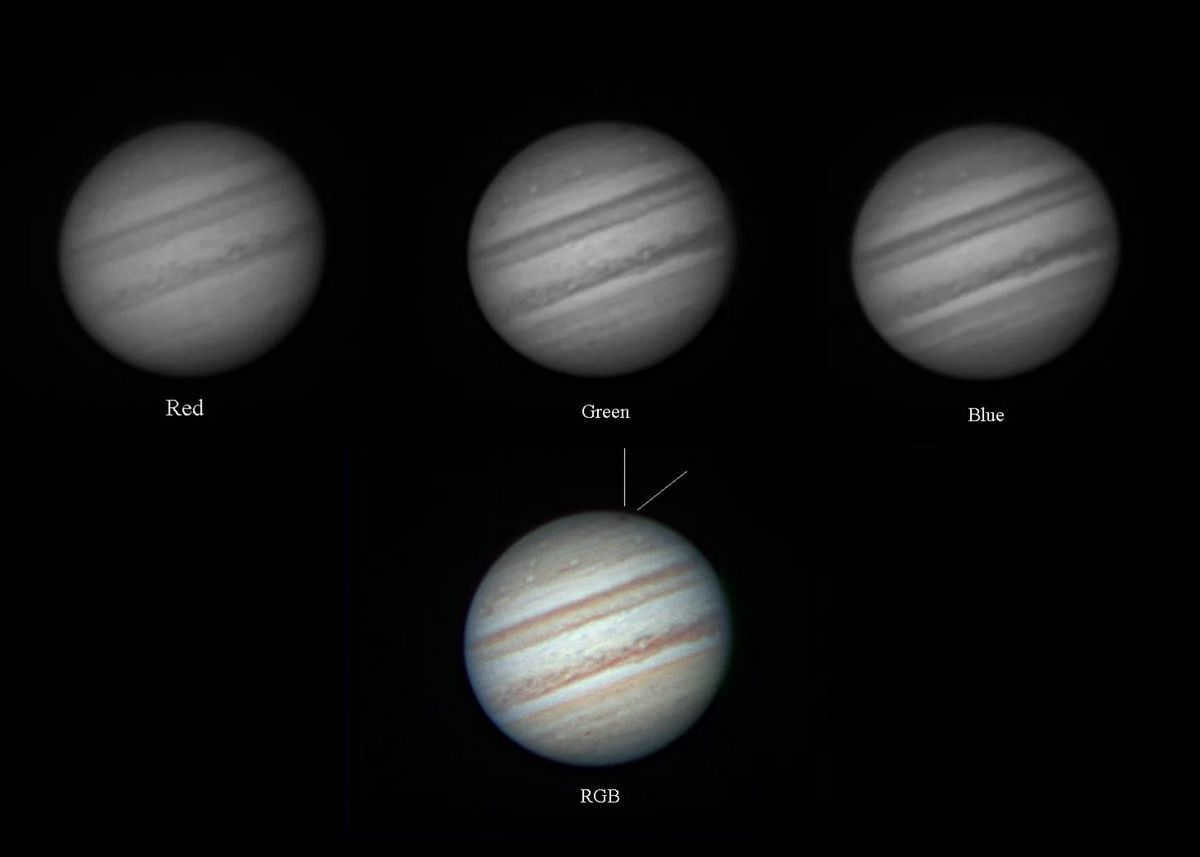
- The visibility of the Red Spot, as well as the red-brown belts, can be enhanced by using blue and cyan filters;
- The polar regions of the planet can be highlighted by using yellow;
- To emphasize the details with a blue tint – such as festoons and outgrowths observed at the southern border of the NEP – red, orange-red, and light red filters are recommended;
- For emphasizing cloud belts, the Red Spot, white ovals and spots, and festoons, green filters are recommended.

